#but i did integrate a lot of concepts from that into the main structure of the world and how different 'players' do things
Explore tagged Tumblr posts
Text

was talking to Riley abt MC AU Groda/Ancient related stuff and how the Galactic (Alphabet) language shapes up with the modern language of Commonspeak used within the universe
thought u guys would like to see how obsessed i am with probably very unnecessary worldbuilding
#minecraft au#if i DONT map out every single detail in my worldbuilding then what is the POINT#would love to explain now i integrated the emerald trade into this au at some point#since Villagers/Illagers as they are in MC aren't really a thing in this AU#for a couple of different reasons#but i did integrate a lot of concepts from that into the main structure of the world and how different 'players' do things#mc au#minecraft au mastertag
9 notes
·
View notes
Text



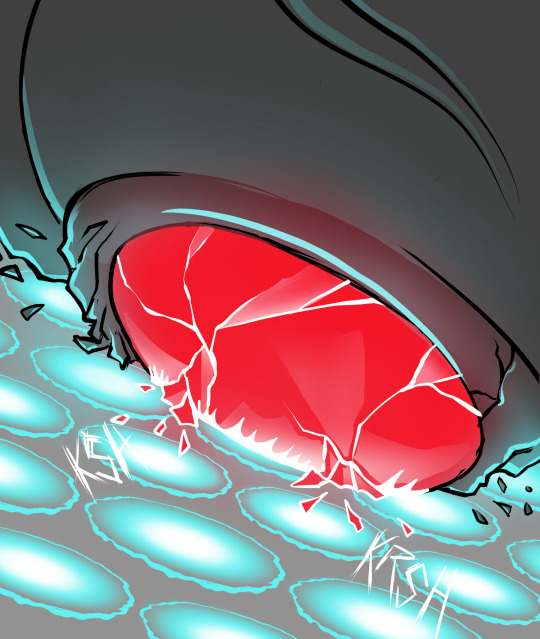

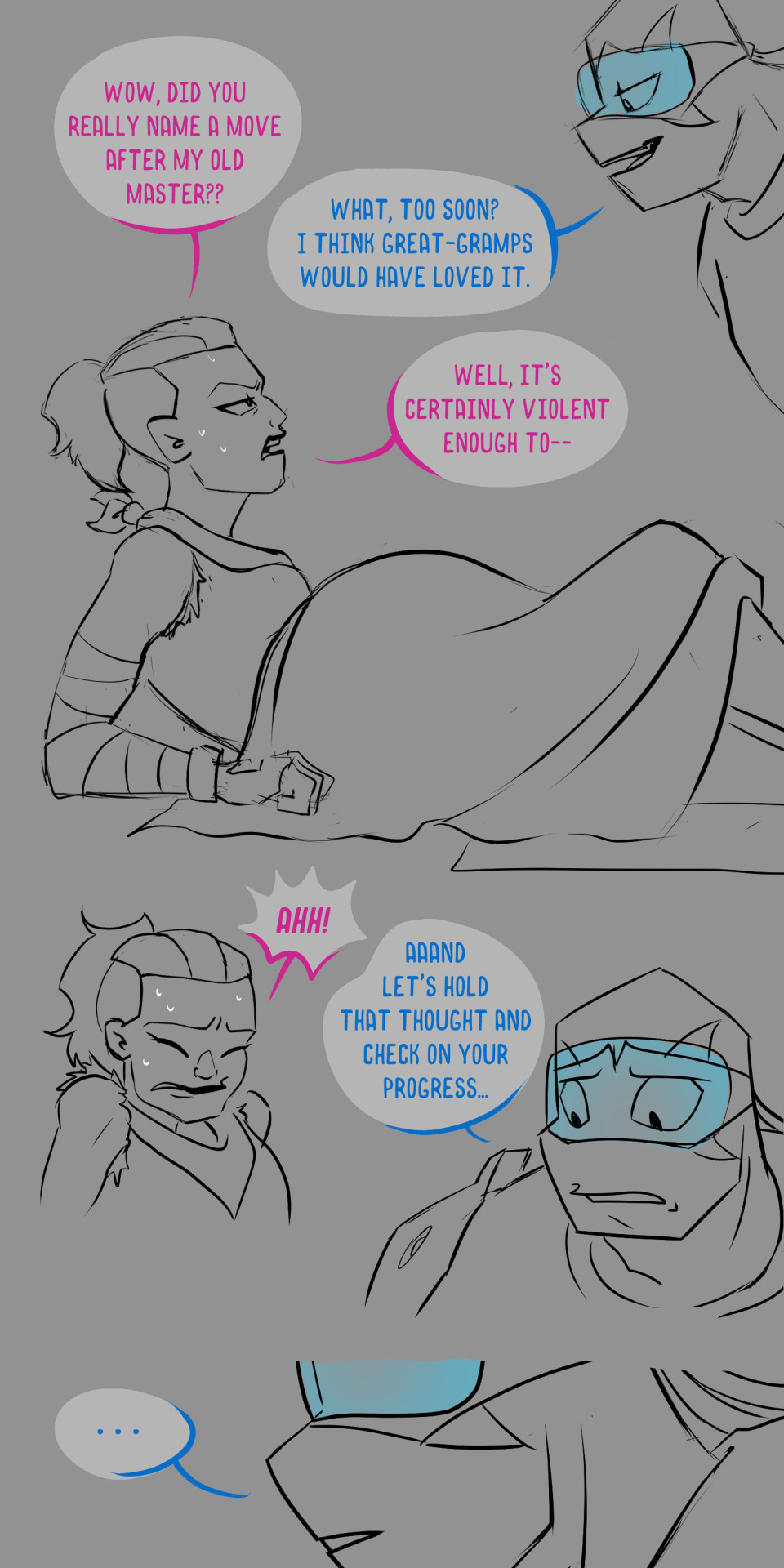

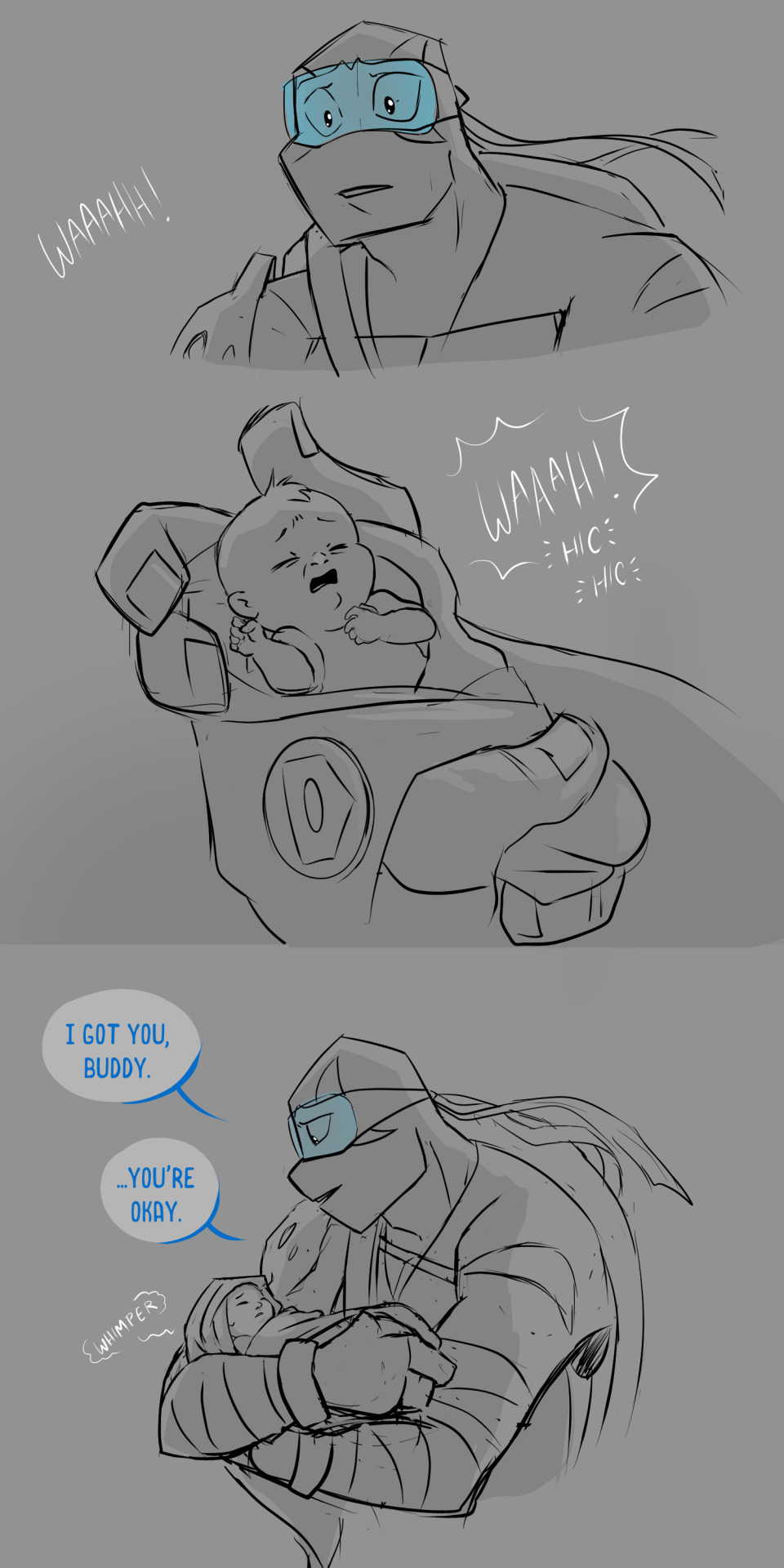

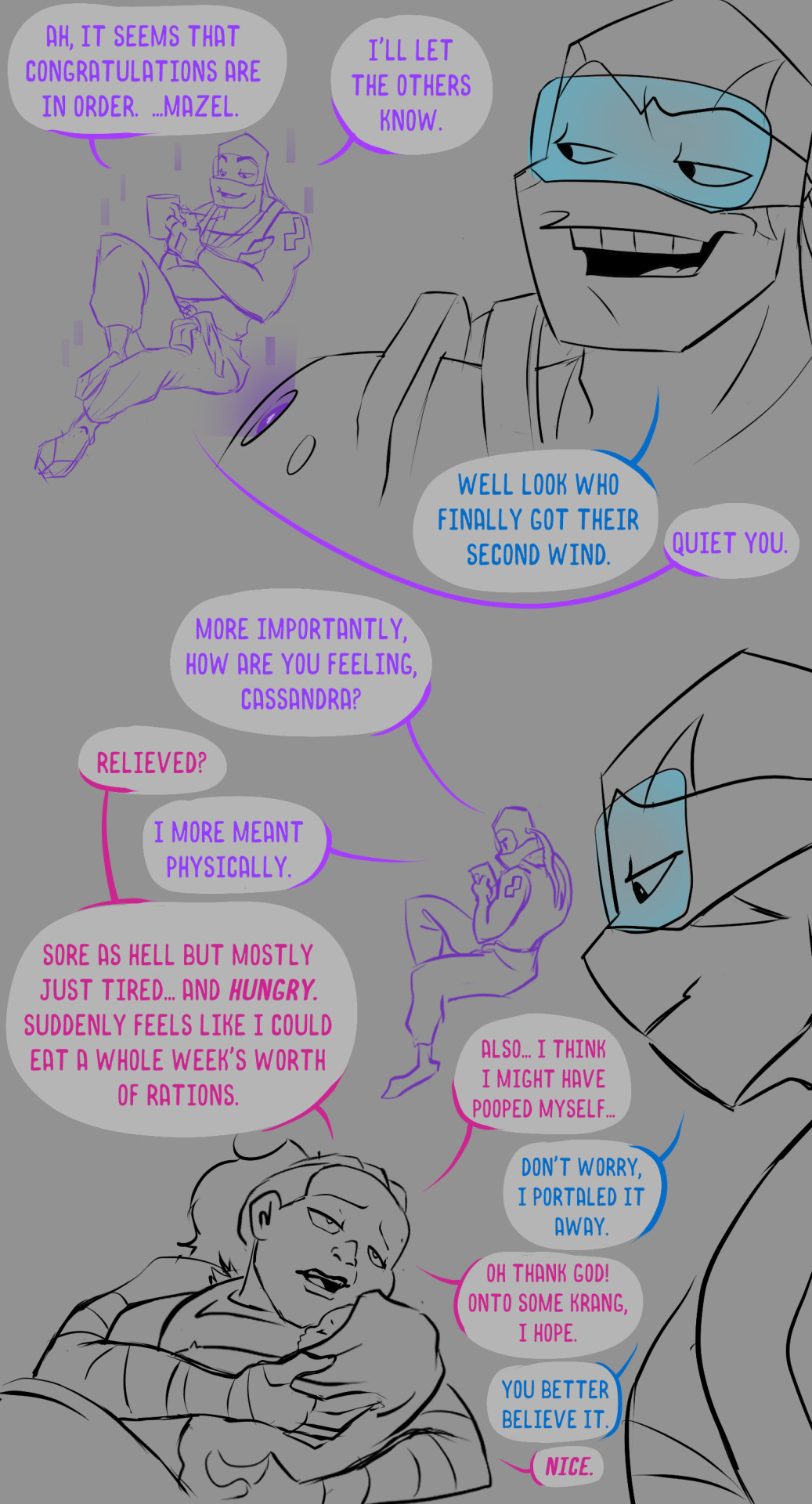

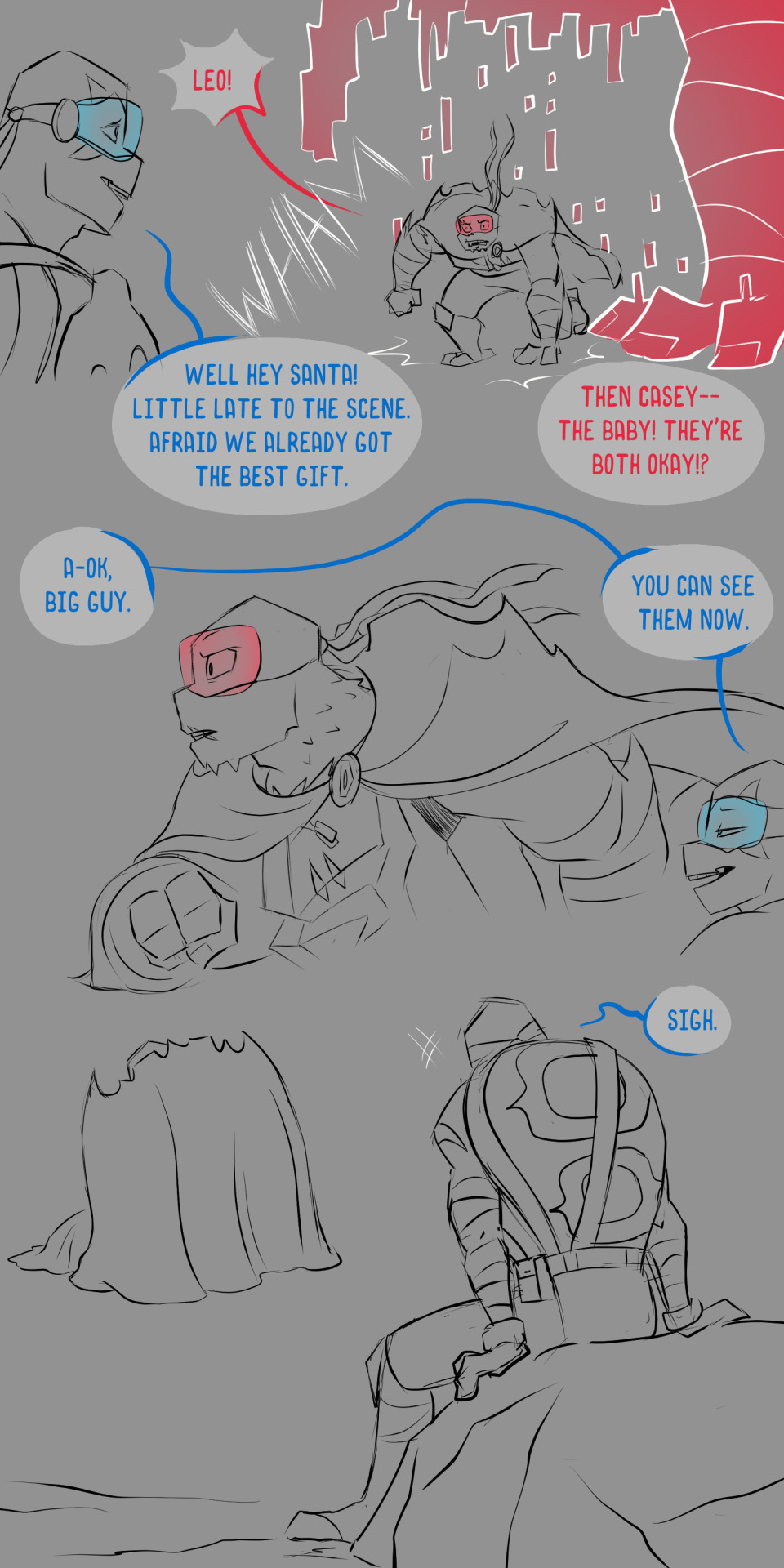

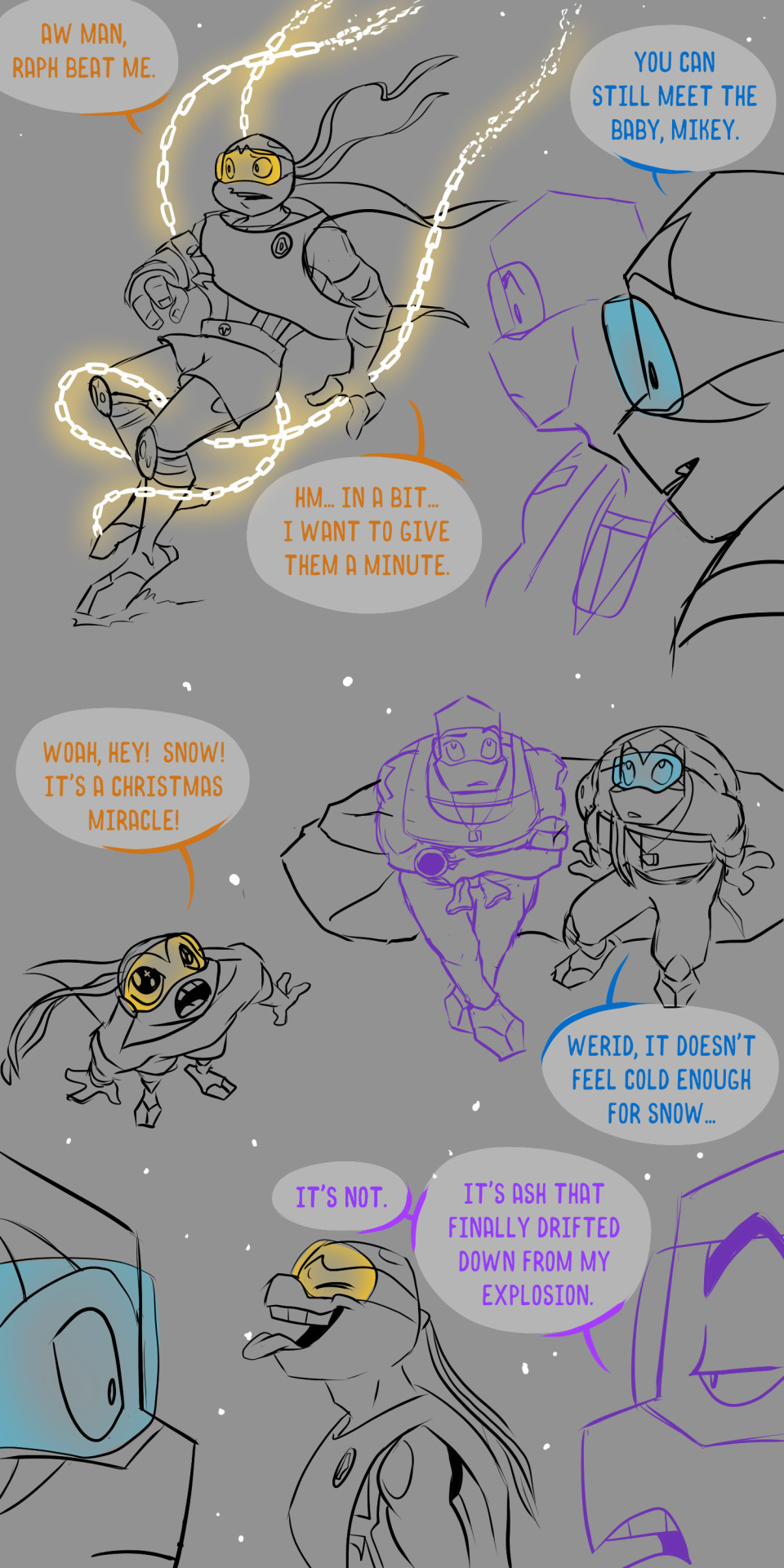
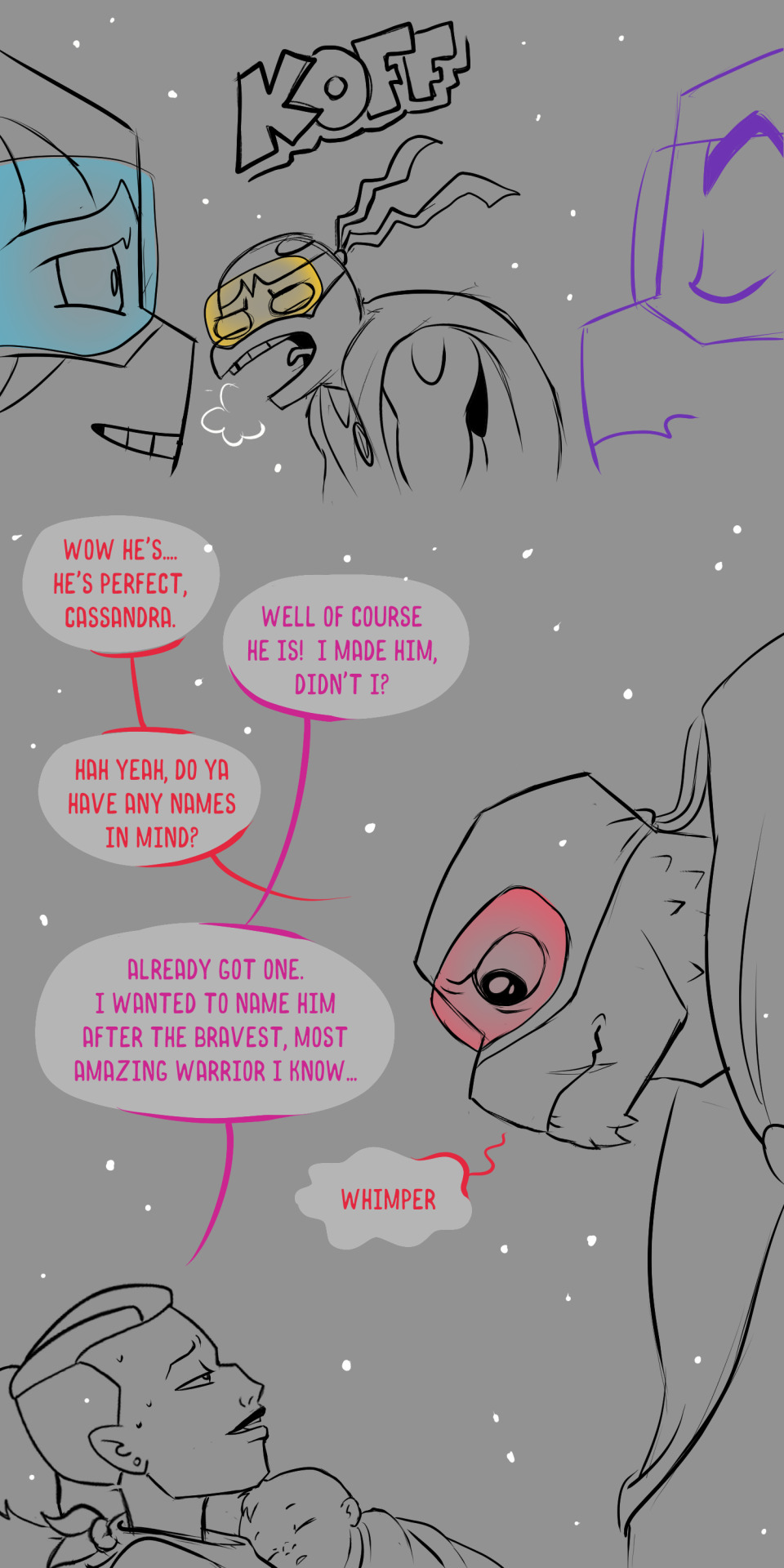


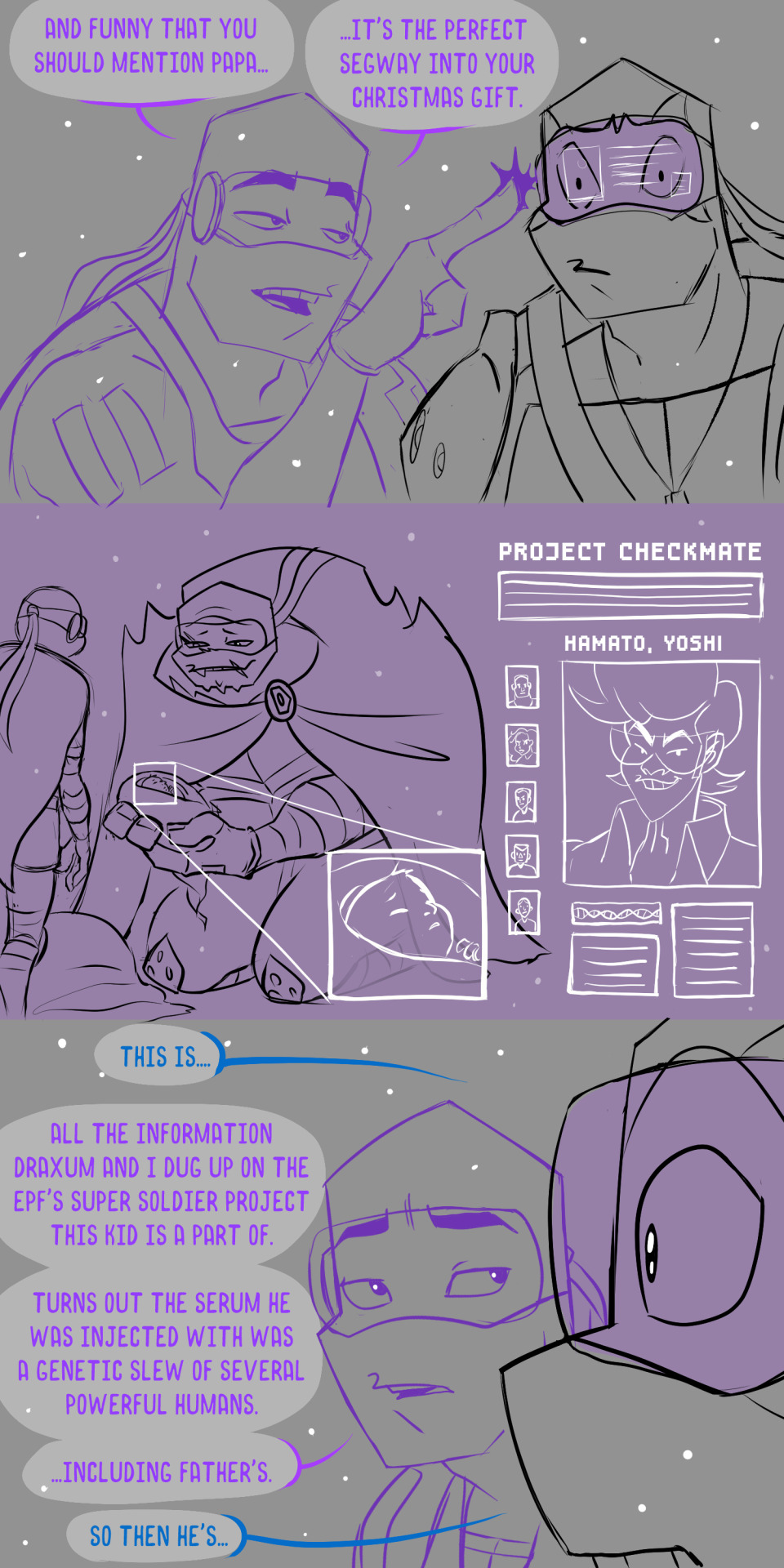




It is done! *falls down*
BEGINNING || PREVIOUS || NEXT (SOON) MASTER POST
I have... so much to say on so many different things but it is 2:30 in the morning so I will keep this as brief as possible. First off, thank you to all my mom friends and mutuals who helped me with accurately portraying and normalizing the experience of giving birth. It is wonderful, and painful, and gross, and beautiful. I apologize if it made any readers squeamish (and I know there were a few gross jokes in there) but considering how gross the tv show got, I think it remained true to the overall vibe!
Second, I wanted to talk about the concept of "hope" in this story. When I first watched the movie, I felt like the idea of hope being their greatest weapon seemed sort of heavy handed and cheesy. However, after watching the ending of the show again I realized that hope is actually a huge reoccurring element in the story and a big part of what it means to be of the Hamato clan. Doubly so, I wanted Casey Junior in a way to symbolize that hope for Leo specifically, so when Leo talks about hope in the beginning of the movie, he's not just talking about some vague concept, but Casey Junior himself. He is their greatest weapon and he doesn't even realize it.
Thirdly, so uh... Casey Junior. I apologize if it had seemed out of left field, but do know that the decision of his origins was not made lightly. The shear similarity in his facial structure to Lou Jitsu as well as several other factors that I will refrain from stating due to future spoilers was too numerous to ignore! It is an integral part of his story for reasons that will go unsaid for now, and no, he does not know he's distantly related to them. Also, Big Mama! Been holding onto her concept for some time now! I loved the idea of her mystic broach becoming damaged so she can only be cloaked to a certain degree, making for an interesting blend of both her forms. She was really fun to figure out!
Finally thank you everyone for your patience. This special turned into quite the endeavor with most of the updates exceeding 20 pages each, but I'm so happy I was able to finish it... even if it did take so much longer than my projected hope. I can't wait to get back to the main storyline, though I shall miss these silly, overpowered boys. We got a lot of ground to cover and I'll likely be posting a summarized reminder before continuing. ...and after I finish work on some Zines and the holiday special winning commission!
#rottmnt#rottmnt replica#replica#kathaynesart#save rottmnt#rise of the teenage mutant ninja turtles#unpause rise of the tmnt#unpause rottmnt#tmnt#pregnancy#child birth#giving birth#violence#gross jokes#poop jokes#replica holiday special
3K notes
·
View notes
Note
I'd looove to hear a little about your worldbuilding process if you don't mind sharing. How do you go about it? I know you have shared in a few posts already but just wanna know moree. Also where did it all begin? What inspired you? (eating it all uppp!!!)
hi!! I know I wrote a big long thing like last year or the year before about the process to making a setting but I cannot be arsed to find it rn so here's some disconnected thoughts
Overall I don't really make Headworlds or Worldbuilding Projects the way a lot of people do (which is why u keep hearing me say 'setting' over and over) because mainly what I make are stories in the order of characters -> plot -> world. those three things have to serve one another in that order of importance, so the world itself bends to serve the narrative. for example, ultimately idgaf where the holy beasts' skeletons come from, that is not important because the beasts are basically just a big plot device to serve the story. i can make some post-hoc justifications for their existence (and i did) but at the end of the day it will not and does not matter how they work or where they come from. the world is full of mysteries that will never be solved because the characters are not in a position to solve them. aside from a single border conflict, the world outside the mezian empire is nebulous and unimportant.
I don't enjoy working in a world -> narrative order because what I want to produce isn't just a series of info posts or artpieces about a setting, but a closed and self-contained story which is the justification for the entire world's existence. Headworlds that are all world and no character don't interest me.
So basically in the process of worldbuilding, I have to serve the story. A while back I made a post about continental history around Inver, all these wars and occupations and schisms and so on. All of those exist solely to provide a particular political climate, justification for Aquitan's theocratic structure, and the spread of the southern church north into Inver. I already had the idea of this church, that it would be integral to the country as a main political faction, so now I have to figure out how it got there and the political ramifications of that. It's all worldbuilding for sure, but it's a support structure underneath the story about how that church eventually changes world history, because i wanted to write a story about a church lol.
I guess if I wanted to explain The Process for a world -> characters setting i'd just be giving you How To Write A Story 101 lol. But basically: I think of a concept which interests me (big mechs yay). Then I think of a conflict that might arise (where does the fuel come from? who controls that supply? what might that do to the concentration of power in this area?). Then I put a character in what I consider to be the most interesting position to observe the effects of this conflict (a knight, an enginesmith, an exile), and honestly the main plot generally writes itself after that. I extrapolate the hook from that.
In terms of characters, I try to avoid calling them 'ocs' because in my mind 'oc' tends to be a very static stand-alone thing. Like I couldn't make a useful ref sheet of my characters because they are all changed by the story. I couldn't say 'he has a carefree personality' because in a few chapters no he fucking won't. in the same way i struggle a LOT to talk about my Siren setting which as close to a specbio 'headworld' as i'm ever gonna get, because I am worldbuilding in vastly different time periods at once in a world which is always changing, i can't make a post about for example a map of Siren because that's just a map from one era, I'd need to make a dozen maps to show how things change, how time affects it all, etc.
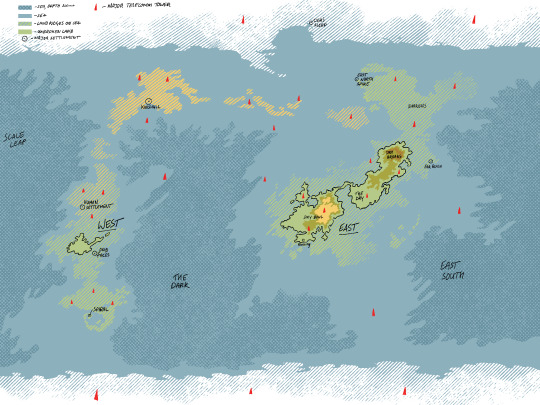
Because nothing is ever static and everything is in flux, pretty much the only way I can handle a setting like this is, again, just to focus on a few small stories centered around a cast of characters separated by time (i have... 4 distinct stories in Siren. maybe more). this is actually a frustrating barrier to me sharing any information at all about this place lol i'm the struggler
Where did it all begin? When I was 11 I used to write stories in my copybooks in class. There has never been a time where I was not making stories and where my stories were not the only important thing at all to me, superseding literally everything else. I learned how to draw digitally in 2011 because I wanted to draw my characters.
What inspires me? Everything lol. I actually don't have time to Consume Media much, I struggle watching movies or tv and I mostly hate video games because I would much rather be productive and sitting and watching a screen feels like a waste of my time. but I like reading books because I can take them with me on my phone. I get ideas from all sources but mostly non-media sources, like obviously mythology but also my history with the church and my scientific education. Usually nonfictional sources interest me the most (i was going to write a whole story that was a post-apocalyptic plague plot based on canine transmissible venereal cancer haha and even to this day that's where "the Immortal Hound" title comes from, little easter egg in inver)
96 notes
·
View notes
Text
Pawstep Pathway Warrior Cats
If you're interested in a Minecraft server dedicated to Warrior Cats roleplay, please take a look! This server is based on the book series Warriors by Erin Hunter, and you'll be required to have a little bit of knowledge of the series to join. Pawstep's roleplay uses the book series' lore as a foundation but modifies it to make it more interesting and fun.
IP: randomchimp.no-ip.org:20013
(I know the IP is a little silly, but it's been the same for a decade.)
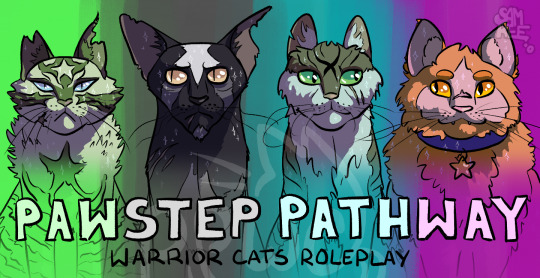
Detailed information beneath the read-more!

Pawstep Pathway's lore diverges from that of the books during the Great Journey, so after the Prophecies Begin and part of the New Prophecy arcs. First arc characters like Firestar are canon in legend, but some original characters walked among them in life in the server's canon to make way for our Clans. The Great Journey from the Forest territories was a time of extreme change and upheaval for the Clans- not just physically, but spiritually and socially as well. Faith in StarClan strengthened for some, but faltered for others. The old allegiances were tested time and again, and when the Clans reached their prophecized homes, many realized they could no longer bow to tradition. Three great cats rose up, spearheading revolution. Though they were countered by a fourth, they managed to take power, changing the structure of the Clans forever.

Many of the foundations of Clan life remain the same, but the cultures and customs of the old Clans gave way to the birth of new ones.


CrestClan is the Clan born of the Resistor, Creststar. Those who were most pious and attached to the old ways joined her when the old Clans fell, and their descendants still uphold their traditions, for better or worse. They are known for their stubbornness, their strong reverence of StarClan, and their hatred of outsiders.

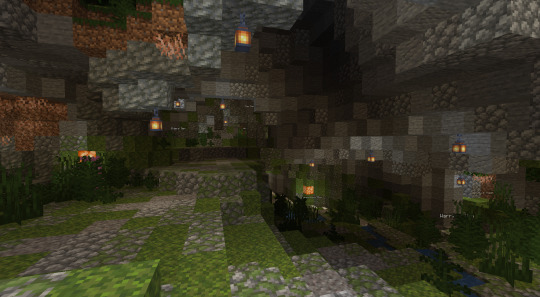
HollowClan's progenitor, Hollowstar the Pacifier, rose to greatness by harnessing his own fear. The Dark Forest began to make its presence known during the Great Journey, attempting to sow discord, but those both pious and fearful joined together to pacify them and assuage their anger with recognition. Their descendants are known for their cunning and their fearfulness, along with their strange naming conventions.

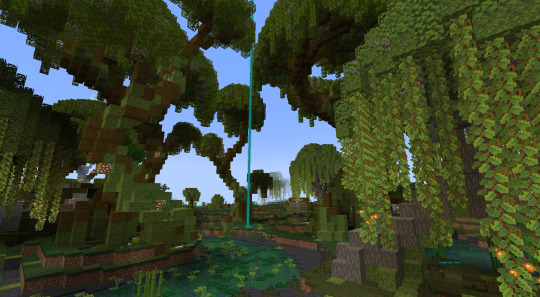
MireClan is the only Clan over which StarClan does not hold true dominion. Mirestar the Denier and many of their followers knew StarClan was real, but believed it to be cruel and self-serving. Others simply did not believe. Either way, their descendants walk out of the light of the Stars, and yet are known for their strong moral code and unbreakable bonds of loyalty.

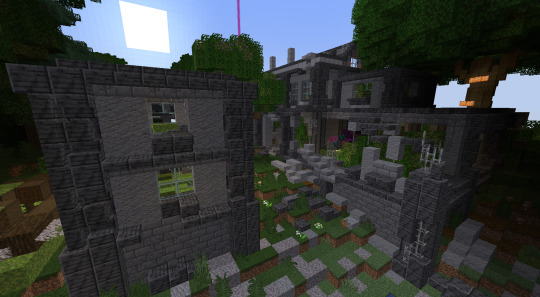
RuinClan's first leader, the Outsider Ruinstar, most strongly saw the need for change and new ideas within the Clans. She and those who welcomed her rejected the xenophobia and stagnation that had been integral to Clan life for generations. The diverse mix of descendants and newcomers that make up the Clan are known for their friendliness, openness to new ideas, interaction with twolegs... and the strange concept of "fashion".
Aside from the four main Clans, we also have StarClan, the Dark Forest, a Twolegplace where you can play as a kittypet, and plenty of space for loners to roam.

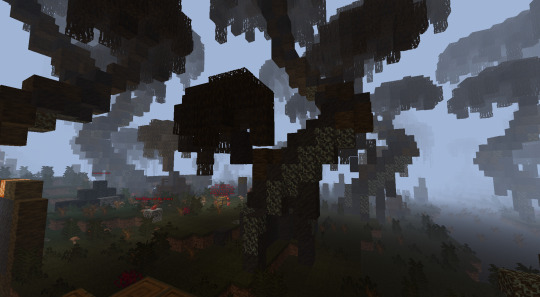
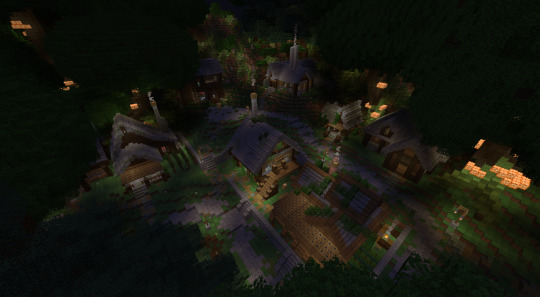

Pawstep Pathway has a fully explorable Clan map with custom lore, including a modified Warrior Code and other changes that still fit the tone of the original Warriors series. You and your characters will have the opportunity to grow, interact with others, and continually affect the lore of the server. A good amount of additions are planned for the future, so stick around to see those, too! We've been around for eleven years now and have had a lot of time to learn what makes for the most fun.
IP (again): randomchimp.no-ip.org:20013
The server is undergoing a revitalization, so if nobody is on or you need help, feel free to join our Discord!
#warriors#warrior cats#wc#warrior cats art#wc art#fanclan#warrior cats rp#warrior cats roleplay#I tagged the art because the header image is my original art and I'm proud of it#promise I'm not just tag spamming#pawstep pathway#ppwc#original shit#minecraft#minecraft server
23 notes
·
View notes
Note
hello!! i have thoughts about the hunger au worldbuilding <3
okay so
will Grian ever have an encounter with the Watchers in the fic (you dont have to answer ofc)?? but if he did,, what would his reaction be???
are they looking for him? did they just let him leave??
because- like. from what i can remember they didnt have any malicious intent towards him?? like Watchers function on a completely different moral level so they didnt mean any harm they DID harm him, y'know? if that makes sense??
also! do they Watchers love him in the sense of like,, parent child love? or do they simply view him as their offspring TM
now that im typing this out i feel like this is all very spoilery ish so you probably wont be able to answer it, but!!! i had to try >:)
-🐛
Hey bug anon!!! Dw i can answer these, thanks for asking!! :D
The Watchers wont be showing up in the main fic-- although theres definitely room for them to appear in future oneshots!!! That being said, uhhh.... Grian would NOT have a good reaction to seeing them again. He's got a lot of trauma surrounding them-- thats like, hardcore panic attack breakdown territory if he ever had another encounter.
And the Watchers are looking for him, actually-- community is such a big part of Watcher culture that its anathema to them that he'd ever even want to leave in the first place, and they worry a lot for his safety (considering hes both an integral piece of restoring their population, and because to them, striking out on your own is synonymous with death). They've been looking for him for years now, though by the time the fic takes place, that's tapered off from any active searching. These days, they only look where their feeding happens to take them (many of their colony assume he's dead, but some still hold out hope despite everything).
They didnt let him leave. Grian spent YEARS carefully watching them, cataloging their habits, learning how both they and his new body worked, before making a rapid and desperate escape. But they also didnt hold any malicious intent! Like you said, they just have a completely different moral structure, and ultimately, they were just following their customs. Community values dictate they stick together, so Grian's mad run for freedom took them all terribly by surprise, and was ultimately what gave him the leverage to successfully escape
I think the way Watchers parse the concept of love is very different from ours-- i hesitate to say they loved Grian if only because i dont feel like they define that feeling the same way Players would or even how we do irl. But they did deeply care. Juveniles are highly valued and taken care of by the entire community-- although Grian had the mind of an adult, not a freshly hatched juvenile, so that did make a slight difference in how they viewed him. I think a more accurate way to look at how they felt about him is that of a mentors and mentee relationship, where they taught him how to survive as one of them, and fully incorporated him as a member into their colony. He was genuinely cared for; in my head, i liken them to a well-meaning but very controlling family (though not a nuclear one)
Thanks again for the ask, bug anon!! :D it was nice to get a chance to talk about this!! I definitely want to write the Watchers proper at some point, so who knows-- maybe in a future oneshot, they might appear. Whether thats a pre-canon fic or a future one...... well, who's to say >:]
37 notes
·
View notes
Text
youtube
youtube
Posting here due to having talked about this very subject recently (manga vs. anime).
I basically think that this guy is way off in a lot of his critiques, notably:
- Criticizing the monster-of-the-week structure for the anime in favor of the manga's plot!plot!plot! pacing. I feel like that sort of pacing works fine for a monthly (not even weekly) manga, but not so much for an anime with this concept. Toei actually approached Naoko Takeuchi with the suggestion to do Sailor Moon (a tokusatsu series) based on her earlier Codename Sailor V work, which actually had a monster-of-the-week structure, so honestly the anime's style of pacing was ironically more what the Sailor Moon concept was tailored around than the manga! It also allows the world and characters to be more fleshed out than in the manga, which always had difficulty in that area especially for side characters and villains.
- His criticism of Usagi and Rei was totally off-base. He was correct in how Usagi's constant regressions as the anime went on did her no favors, but she was fine to start with. Her freezing up and giving into despair over her friends' deaths in the first anime season's climax isn't any less weak than her attempting suicide over Mamoru's death which would leave her friends at the mercy of Metalia in the first manga arc's climax. Rei's personality change in the anime was for the better, IMO, and her dynamic with Usagi may have been overplayed at times but I never got the impression they legitimately hated each other nor did I get the impression it was sexism on the male writers' parts. Vitriolic Best Buds is a legitimate thing.
- While I also don't much care how Usagi and Mamoru's romance develops in the anime compared to the manga (and I absolutely hate the pointless age gap the anime added between them), I have to defend Mamoru from his accusation that he was hypocritical to give righteous speeches as Tuxedo Mask yet be an asshole as a civilian. Unlike in the manga, Tuxedo Mask was initially a split personality from Mamoru. He didn't know he was Tuxedo Mask at first, the two didn't get integrated until he got ahold of a Rainbow Crystal in Episode 26. After that, he actually began treating Usagi with more kindness. He was too proud to just apologize and still tried to act stand-offish, but he clearly didn't have it in him to be a complete jerk anymore and was actually fond of her now. The romance still pulls too abrupt a 180 given that Usagi doesn't soften on him until Episode 34, and even then not on the level justifiable enough for love, but the fact remains that Mamoru did straighten out his act after integrating with the Tuxedo Mask persona (which is good since he really was insufferable beforehand).
- The Dark Kingdom was superior in the anime, period. Yes, it was a bigger threat in the manga, but being threatening doesn't always equate to being interesting. He has a point that Queen Beryl is more interesting in the manga than in the anime and I do wish the anime had included more of that stuff rather than just allude to it, but I still say she's stronger as the Big Bad than just as Metalia's chief pawn. Metalia is boring; she's made of evil and does evil because she's evil and can't be anything else. Beryl actually has a motivation, and one that is directly tied with the main heroine and her romantic interest. That's why it's more satisfying to see her infused with Metalia as the Final Boss instead of just her as the third-to-last Boss.
- Lastly, he got the Silver Crystal thing wrong. The Rainbow Crystals are shards of the physical Silver Crystal, but what gives it its power, its spiritual essence, is still Usagi's soul. That's why they couldn't just be merged into the Silver Crystal even after Kunzite had all seven. That only happened when the tear from Usagi, with all the feelings of her soul, was added. The Silver Crystal is thus linked with her soul and is still its manifestation, as seen in the R movie where she dies when its shattered but when she is restored to life it is repaired.
Things I agree with: axing Princess Serenity's suicide was a good choice, the stretch of episodes with Evil Tuxedo Mask were dumb, the changes in powers for the girls and Tuxedo Mask was stupid and pointless, Minako's character regression across the anime was annoying and kind of disrespectful when you really think about it, Yuichiro should've amounted to more, the age change and adaptational jerkassery of Mamoru was terrible, Jadeite's sudden misogyny in his final episode was really fucking weird, the scene where Artemis is "revealed" as Luna's contact makes no sense and should've been cut, Usagi's suicide in the original manga and Crystal did her character a grave disservice, and the Shitennou's adaptational expansion in Crystal was utterly botched and ended laughably.
7 notes
·
View notes
Text
Overwatch 6v6: Roles or "How each part makes a damn good whole"
(This is part of an on-going series around a recent Dev. blogpost about testing 6v6 as a format in Overwatch 2.
First Post: Prelude is here
Second Post: Game-modes is here
Dev Blogpost part 1 is here)
This is going to be an expansion from a more truncated thread I did on another site:

This section of the 6v6 blogpost that the Game Director put up, is particularly interesting to me because it earmarks one of the more abstract qualities about the format that, despite it's chaos, was integral to it's function - The Role Triad.
When looking at an MMO as the Role Triad standard, there is, often, a lot going on with different 'puddles' on the ground providing various effects/mechanics; individuals (both friends and foes) in different locations and positions; the predictable, if overwhelming at times, hordes of enemies and their own personal effects-
-but all of this can be effectively streamlined when the Roles each individual player is operating in, are well-defined. Or, more accurately-
Roles help players define what the player should, can, and will pay attention to during the chaos of a match, because each Role has specific tasks they are attempting to accomplish

If each Role is abiding their respective tasks and all the responsibilities that entails (and the designs reflect those tasks, without a heavy overcompensation on mechanics i.e bloat) it helps to pave a crucial path through all the chaos of 12 separate heroes activating dozens of mechanics, and all the resultant sound/visual clutter that goes along with them.
You could find rewards and learning moments in the chaos, based on how effectively you were accomplishing the tasks of your chosen Role.
By contrast, your Teammates also gained valuable ease and approach to each of their Tasks by you accomplishing yours effectively.
The Overwatch community knew this fairly reflexively (if not entirely accurately) within the terms of Main/Off Tanks, Flex/Main Supports, etc.
Having a road to walk while playing your Role, provided the necessary structure for players to not only play a match, but learn at a pace that was suited to their preferred Role(s).
This promoted stylistic choices in how they played, easier hero selection (a strong requirement for a game that allows you to switch heroes mid-match), and also gave player's a firm sense of identity where their interests were, even when playing off Role.
If a Player could reasonably find enjoyment with positioning and strategic angles, across a multitude of heroes, there were individuals in each Role that could satisfy that enjoyment, drawing connective experience between a Reinhardt, a Brigitte, or a Torbjorn to a modest degree.
This concept, however, would largely begin to suffer when the game shifted into 5v5 and, ultimately, deteriorate to incomprehensible as the years ticked by.

Downsizing creates more work, for less people

Each Role was meant to have 2 members per team.
3 members to a Role presented big issues when GOATs (3 Tanks + 3 Supports) was a dominant team composition in the game.
The inflated healing numbers that could be easily inputted into 3 separate health pools well above the 200 health threshold made Support Ultimates happen in the span of seconds-
-while 3 Tanks provided health pools that required multiple clips of ammo, multiple cooldowns, and maybe some ultimates (and even then, a big maybe) just to burn through.
All while ensuring no other composition was possible and that players were forced to play just to compete.
All that to say-
3 members of any one Role can spread enough of the responsibilities for that Role's tasks between them, that enemies did not have any reasonable windows of opportunity to retaliate
On the other end of that spectrum, 1 member of a Role on a team, leaves too many responsibilities for that lone individual to cover.
As is the case with Tank in the 5v5 format.
Picturing a singular Role Individual trying to keep track of 4 other team members, would be not unlike a lone cashier trying to operate the till, help customers find what they're looking for in the aisles, and keep the store clean.
Is it possible? Maybe.
Is it functional? Let alone enjoyable?
Absolutely not.
Expecting a Tank (or even a DPS) to be the sole provider for their Role's tasks is to play a game of triage, with those tasks -- you will inevitably have to make every decision and use of a CD cover for a least 2-3 responsibilities in your Role, just to keep up with what the enemy is leveraging against you.
And for those responsibilities you miss (and you will miss them, b/c the cognitive demand to always multi-task will eventually break down), there will be a long term effect that sees those responsibilities disappear from the Role's playstyle.
Peel, Objective Security, and Sightline Pressure have all taken significant hits in Tank Objectives with the advent of 5v5.
Resulting in increased workloads for responsibilities that the other Roles were never designed to accomplish by themselves.
Peel is better served by heroes who have the Health Pools and Damage Mitigation that is foundational to Tanks, as is triggering Overtime, or pressuring Snipers.
But when your Role demands you maintain the front line at all times, or worse, dump into the enemy backline because it is the most efficient use of your abilities, the crux of the Tank Role as both a Defender and Space Maker for your team, becomes...confused.
Nevermind the poor "squishies" in said backline who suddenly have to figure out how to deal with a 700 health monstrosity barreling at them with both CC and Damage Reduction that they can't reasonably be expected to do anything about.

On Role Passives...ugh
A quick note to highlight-
Role Passives are each designed not as supportive and versatile elements that improve the quality of the Role's gameplay. Instead-
Role Passives are each selectively designed to make other Roles worse at their tasks.
The DPS passive punishes healers/supports by reducing their effectiveness at a flat value.
The Tank Passive(s) reduce CC impact, Ult charge reward, and Headshots from both DPS and Supports (not even your own Healers can get the full Ult charge gain for healing their Tanks).
While the Support Passive demands the other two Roles find the fastest ways to secure an elimination, which often revolves around heavy burst, damage amplification, and/or broad AoE effects.
Passives both narrow the gameplay options and create artificial frustration for the other Roles, all while providing "value" at an uneven distribution.
There will always be certain heroes that benefit more than others from a Role Passive.
In a 6v6 environment, Role Passives would be irrelevant, and impressively obvious in their irrelevance given the broad coverage each Role Pairing could provide across all responsibilities.

6v6 provided significantly more clarity for each of the Role's, allowing them all to be defined within their necessary tasks. This ensured Players were not overwhelmed with excessive cognitive demand and, instead, could focus on the most immediately important elements of the game to their respective Role.
It was a defining trait of the 6v6 format, that allowed those who were looking to "Just Heal/Defend" to perform that function adequately without the expectation to pop off, get kills, and peel to any excessive degree-
-and in a format like 5v5, these additional qualifiers become almost mandatory for success to be measured.
The bleed over between Roles has muddied the pool of options to the point that the overt chaos of what makes Overwatch into the game that it is, feels less and less navigable by feel, and more by a requirement for memorized numbers and strategies that are not intuitive to the design.
And considering those numbers and strategies can't even be found inside the game? That you have to search them out on different websites and from youtube videos?
That says something we should be paying attention too.
#overwatch 2#overwatch#6v6#design theory#Solo Tanking is a lonely endeavor#Give me back my partner please#even if they go off on their own at least they're there#I can't run this daycare by myself!
3 notes
·
View notes
Note
SO my iterator oc group.
The oldest iterator in the group is Rays From Annihilation (named for the product of the matter annihilation caused by void fluid). They act as a kinda unofficial group leader, regularly giving advice and directions to newer iterators in testing and personal situations. However they're also the second to collapse due to age and neglecting themselves and instead helping others more. Their collapse causes disunity and more infighting in the group which is not great.
The second iterator to be built was Asteroid Orbital Resonance. Early into her life, she had some disagreements with RFA, which led to her generally not becoming very connected with the group, instead keeping to herself and generally disliking the rest of the group who were more connected to RFA. After the Mass Ascension and SOS events of the main story, she would go on to. fucking kill another iterator. for a lot of Bad reasons, but in part to attempt to test theories about iterator death/ascension (she does this by sending a slugcat to plant bombs in a cave system beneath the iterator, causing a collapse worse than even moon's so the iterator is like Dead Dead.) her reasons were bad she was not justified. women's wrongs.
Third iterator built was Unintended Interference (yes I know the name is the same acronym as a base game iterator but I'm not changing it). UI spends most of her time hacking into broadcasts to see everyone's drama. not even maliciously she's just bored and curious (mostly after mass ascension, before she did much less on account of. not supposed to.) if there was an actual story for these guys it'd be from her perspective and she is the one who eventually figures out what AOR did, and retaliates by collapsing AOR with bombscugs. AOR does survive the collapse in a state similar to base game Moon, and eventually becomes a less awful person after she starts using her limited abilities to help out a local slugcat colony made up of the descendants of test subjects of hers.
rest of these guys are not in any particular order because it doesn't matter as much but there's:
divorce yaoi (two iterators who do nothing but beef about everything. one time one of them sent the other the instructions for violating the self termination taboo. these guys don't have as much lore but they're funny. their names are Eightfold Experimentation and Hills Among Mountains which creates the acronym HAM and that was an accident.)
codependant Yuri (A Thousand Tangled Wires and Unending Blizzard. ATTW partially collapsed first of the group due to resource mismanagement and general disorder immediately following the Mass Ascension. ATTW retained limited functionality, and only enough comms capabilities to talk to one other iterator, UB. UB and ATTW grew close through many conversations and UB pitied ATTW and dedicated herself to trying to help UB. After a Really Long Time spent working on it, UB would ultimately recover ATTW's puppet as well as many of her memories, bringing them into her own structure. UB then integrated ATTW into her own chamber, so there were two puppets in there and ATTW's memory was added and so it was like two iterators running on a single system. as time passed the distinction between vanished as they basically became a single, unified being before UB's ultimate collapse. shout-out to girls who merge their souls together. I don't care if this doesn't make sense or work with rain world lore I'm just here to make thematically relevant yuri.)
then there's Countless Gleaming Stars. they got blown up by AOR so they don't do much. they were the youngest iterator in the group. sad!
i have a few other iterator names some with loose concepts but none developed much. one such is Abounding Shimmering Snow and I promise it's a complete accident that I got the acronym ASS. that said Forest Above Graves is a name very intentionally chosen for the acronym it creates,
anyways thank you for letting me talk about my guys if you have thoughts or questions feel free to ask if you have any critiques on like. idk anything I think you know more about this game than I do. okay bye
sorry help I was going to read this and forgot I had this in my askbox I promise I did not ghost you. I don't have any questions or thoughts sometimes i just want to listen.this is very cool
4 notes
·
View notes
Text
Note #40: Prelude to the Stupid, Silly Detective Fiction
“Rather what we are categorizing as stupid media pertains to form more than it does to content. Stupid media is stupid precisely because it fails to meet the criteria of an established category—be that genre conventions, narrative structure, formal cinematic syntax, or an uneasy tension in emerging media and storytelling” (Kerner and Hoxter 9)
I have been reading the introduction of Theorizing Stupid Media: De-Naturalizing Story Structures in the Cinematic, Televisual, and Videogames by Aaron Kerner and Julian Hoxter, and the concept of stupid media reminds me a lot of my usage of the term “silly narrative”. As someone who has grown up reading more manga than novels, I used to call the content of many manga “silly” compared to its supposedly counterpart, high literature. I did not use “silly” here to imply negativity (wellll, maybe a little), but more so to refer to works that do not confine to conventional storytelling convention. When I stumbled upon Theorizing Stupid Media and saw Kerner and Hoxter’s unusual usage of the term “stupid”, I could not help but think: “Hey, this looks like my thing!”
Although the book’s introduction mostly talks about stupid narrative in new emerging storytelling mediums such as cinema, TV shows, and video games, I wonder if I can consider detective fiction, a very classic genre, as stupid narrative? Detective fiction does fit the definition to some extent. For one, it is a rigid, formulaic genre, in which most stories tend to follow a specific plot structure with minimal deviations; this rigidness is also where most of the genre’s criticism directs toward. Secondly, these stories tend to appeal to a need for escapism as the main subject explored in these texts are less about dealing with controversial societal topics, and more about solving an arbitrary clue-puzzle in the form of an “unrealistic” mystery. And while these stories do have a linear engaging plot, they tend to appeal “to the body, rather than to emotion” (9), a common characteristic of stupid media; the WOW factor when the culprit gets revealed, for example, definitely relies more on bodily excitement than deep emotions (of sorrow, of heartfelt, of gut-wrenching, ...). Especially, what Kerner and Hoxter considers to be a main characteristic of the stupid narrative—“[t]he stupid pertains to the (in)stability, the integrity, the understood bounds of categories (e.g., narrative conventions, genre)” (13)—seems to be a common characteristic in detective fiction also. After all, not many people would consider detective fiction to be high literature back then and even till now, in part because of its unconventional storytelling. I think it is safe to say that detective fiction is surely a stupid media.
But why do I need to categorize detective fiction as stupid? For one, it would be nice to use theories I learn from this book to apply to detective fiction, but the other reason is that the term “stupid” compels me. Stupid is a strong word, but in a way that it is so normal and everywhere. When I used to browse social media a lot, seeing people calling unconventional narratives as “stupid” or “dumb” was a frequent occurrence. They were not wrong with their assessments if they were to examine those works by referring to criteria used to determine high literature. In a way, the usage of the word “stupid” in a discussion about a text often leads the whole discussion into debating about how the work is not high literature, and less about what the work is. Take detective fiction for example, detective fiction is itself a genre that has always been met with disdain. Indeed, if we go by the definition of high literature, most detective fiction rarely meet the (supposed) criteria; hench, stupid media. End of discussion? No. The more intriguing conversation I am interested in is how to analyze these works in their own terms, without relying on a comparison to high literature. To enter that conversation, however, will require me to first understand what makes detective fiction stupid in more depth, or in other words, what makes the unconventional writing style of detective fiction discomfort readers of high literature.
Of course, it goes without saying that the purpose of my attempt to understand stupid media is not to debate whether stupid media is “better” or “worse” than high literature. What I care most about is exploring more alternate ways to analyze a text. Once I am done reading Theorizing Stupid Media, it might be fun to write a whole essay on its application to detective fiction.
0 notes
Text
5月28日 – Asakusa | Fukugawa Edo Museum
Today was the official first day of our program, and needless to say—we did a lot! In the morning, after group breakfast, we had our first class meeting, where we reviewed the readings we were assigned about the various sects of Buddhism in Japan and their impact on Japanese society. We also had another reading on the early Edo period of Japan, which both transferred into application at where we went today. And after a brief orientation from our tour guide company, we were off to Asasuka!
•••
Asasuka🏮



Before this trip, I actually went to Asasuka in the past during high school! However, I did not have the cultural background to truly understand its significance as a Buddhist temple site. It was pretty busy the time we went, and we definitely took a lot of pictures! After a 45-minute delay, we rushed to the metro system to make it to the other portion of our class outing.
Fukugawa Edo Museum 🏛️



The Fukugawa Edo Museum had a life-size recreation of the Main Street of Koto City. It gave an excellent perspective to walk through a recreation of what it was like hundreds of years ago. There also was an animatronic cat on one of the rooftops (which scared me whenever its meow would go off).
Transit System🚊

As part of our outing, we were given Suica cards to use throughout our program in Japan to utilize the railway system to travel around Japan. After going through the Edo museum, we were dismissed there to go out and about. But I intentionally wanted to return to the hotel with the professor so I could watch and try to follow along myself to understand the system. One thing for sure is that Google Maps is your best friend! You could tell how busy the train system can get and how heavily utilized it is here in Japan compared to the states that don’t use public transit on a mass scale.
•••
After returning to our lodging, I was completely knocked out until around 9 PM. I hadn’t realized how tired I was until after finally sitting down comfortably for the day. And now, as I scramble to finish my blog post by midnight, I look forward in excitement to seeing what Tokyo has for us next.
———————————————————
📚 Academic Reflection 📚
The first reading, “Contemporary Japanese Buddhist Traditions,” goes into a brief timeline and the impact of Buddhism in Japan from its arrival and development amidst the Meiji and postwar periods and into contemporary Japan. Reflecting primarily on the later half of the first text when it discusses the integration of contemporary Buddhism into the relevancy of the modern day in the way temples try to attract local youth and global tourists through marketing and consumerism. During our time in Asakusa, this can be seen through the shops and local goods which could be bought on the temple grounds.
The second reading on “Mahayana Buddhism” goes into the breakdown of Mahayana Buddhism through its spread and growth throughout Asia and its doctrine. Primarily this text focuses on the concept of bodhisattva, otherwise known as an “enlightened being,” and their purpose. At Asakusa, we see examples of the growth and spread of Buddhism in Japan through the great extent of pagodas, statues, and architecture dedicated to the maintenance and construction of Asakusa.
Finally, the third reading from Hane and Perez, “Early Tokugawa,” went into the shift into the Tokugawa period after the death of Hideyoshi and the rise of Ieyasu. The social, power, and financial structure of the effects of Ieyasu could be witnessed in the layout and high populations of Edo (Tokyo) itself. On our visit to the Fukugawa Edo Museum, we got to walk through and experience a life-size recreation of what a block district looked like back in the Tokugawa era.
0 notes
Video
tumblr
'Loki' takes over: Tom Hiddleston on his new TV series and a decade in the MCU
Ten years after Hiddleston first chose chaos in Thor, Marvel’s fan favorite God of Mischief is going even bigger with his time-bending Disney+ show.
Tom Hiddleston is Loki, and he is burdened with glorious purpose: After playing Thor's puckish brother for over a decade in the Marvel Cinematic Universe, no one understands the mercurial Asgardian God of Mischief as well as the actor. He can teach an entire seminar on Loki if given the opportunity — which he actually did during pre-production on his forthcoming Disney+ show. In conversation, Hiddleston quotes lines from his MCU debut, 2011's Thor, almost verbatim, and will playfully correct you if you mistakenly refer to Asgard's Rainbow Bridge as the Bifrost, which is the portal that connects Loki and Thor's homeworld to the Nine Realms, including Midgard, a.k.a. Earth. "Well, the Bifrost technically is the energy that runs through the bridge," he says with a smile. "But nine points to Gryffindor!" And when he shows up to the photo shoot for this very digital cover, he hops on a call with our photo editor to pitch ways the concept could be even more Loki, like incorporating the flourish the trickster does whenever magically conjuring something. The lasting impression is that playing Loki isn't just a paycheck.
"Rather than ownership, it's a sense of responsibility I feel to give my best every time and do the best I can because I feel so grateful to be a part of what Marvel Studios has created," the 40-year-old Brit tells EW over Zoom a few days after the shoot and a week out from Thor's 10th anniversary. "I just want to make sure I've honored that responsibility with the best that I can give and the most care and thought and energy."
After appearing in three Thor movies and three Avengers, Hiddleston is bringing that passion to his first solo Marvel project, Loki, the House of Ideas' third Disney+ series following the sitcom pastiche WandaVision and the topical The Falcon and the Winter Soldier. Led by head writer Michael Waldron (Doctor Strange in the Multiverse of Madness, Heels), the six-episode drama sees Hiddleston's shapeshifting agent of chaos step out from behind his brother's shadow and into the spotlight for a timey-wimey, sci-fi adventure that aims to get to the bottom of who Loki really is. "I wanted to explore slightly more complex character questions," says Waldron. "It's not just good versus bad. Is anybody all good? Is anybody all bad? What makes a hero, a hero? A villain, a villain?"
Even though Loki — who loves sowing mayhem with his illusion magic and shapeshifting, all with a major chip on his shoulder — has never been one for introspection, the idea of building an entire show around him was a no-brainer for Marvel. When asked why Loki was one of the studio's first Disney+ shows, Marvel president Kevin Feige replies matter-of-factly, "More Hiddleston, more Loki." First introduced as Thor's (Chris Hemsworth) envious brother in Kenneth Branagh's Thor, Loki went full Big Bad in 2012's The Avengers. That film cemented the impish rogue as one of the shared universe's fan favorites, thanks to Hiddleston's ability to make him deliciously villainous yet charismatic and, most importantly, empathetic. The character's popularity is one of the reasons he's managed to avoid death many times.
"He's been around for thousands of years. He had all sorts of adventures," says Feige. "Wanting to fill in the blanks and see much more of Loki's story [was] the initial desire [for the series]."
The Loki we meet on the show is not the one who fought the Avengers in 2012 and evolved into an antihero in Thor: The Dark World and Thor: Ragnarok before meeting his demise at the hands of the mad titan Thanos (Josh Brolin) in 2018's Avengers: Infinity War. Instead, we'll be following a Loki from a branched timeline (a variant, if you will) after he stole the Tesseract following his thwarted New York invasion and escaped S.H.I.E.L.D. custody during the time heist featured in Avengers: Endgame. In other words, this Loki hasn't gone through any sort of redemption arc. He's still the charming yet petulant god who firmly believes he's destined to rule and has never gotten his due.
Premiering June 9, Loki begins with the Time Variance Authority — a bureaucratic organization tasked with safeguarding the proper flow of time — arresting the Loki Variant seen in Endgame because they want his help fixing all of the timeline problems he caused while on the run with the Tesseract. So there will be time travel, and a lot more of it than in Endgame. As Loki makes his way through his own procedural, he'll match wits with new characters including Owen Wilson's Agent Mobius, a brilliant TVA analyst, and Gugu Mbatha-Raw's Judge Renslayer. The question in early episodes is whether Loki will help them or take over.
"One of the things Kevin Feige led on was, 'I think we should find a way of exploring the parts of Loki that are independent of his relationship with Thor,' or see him in a duality or in relationship with others, which I thought was very exciting," says Hiddleston, who also serves as an executive producer on the show. "So the Odinson saga, that trilogy of films, still has its integrity, and we don't have to reopen it and retell it."
Yet, in order to understand where Loki is going, it's important to see where he came from.
Hiddleston can't believe how long he and Loki have been connected. "I've been playing this character for 11 years," he says. "Which is the first time I have said that sentence, I realize, and it [blows] my mind. I don't know what percentage that is exactly of my 40 years of being alive, but it's substantial."
His time as Loki actually goes a bit further back, to 2009 — a year after Robert Downey Jr. big banged the MCU into existence with Iron Man — when he auditioned for Thor. It's no secret that Hiddleston initially went in for the role of the titular God of Thunder, but Feige and director Kenneth Branagh thought his natural charm and flexibility as an actor made him better suited for the movie's damaged antagonist. "Tom gave you an impression that he could be ready for anything, performance-wise," says Branagh, who had previously worked with him on a West End revival of Checkov's Ivanov and the BBC series Wallander. "Tom has a wild imagination, so does Loki. He's got a mischievous sense of humor and he was ready to play. It felt like he had a star personality, but he was a team player."
Hiddleston fully immersed himself in the character. Outside of studying Loki's history in the Marvel Comics, he also researched how Loki and the Trickster God archetype appeared across mythology and different cultures. "He understood that he was already in something special [and] it was a special character in a special part of that early moment in the life of the Marvel universe where [he] also needed to step up in other ways," says Branagh, who was impressed by the emotional depth Hiddleston brought to the part, especially when it came to how isolated Loki felt in the Asgardian royal family.
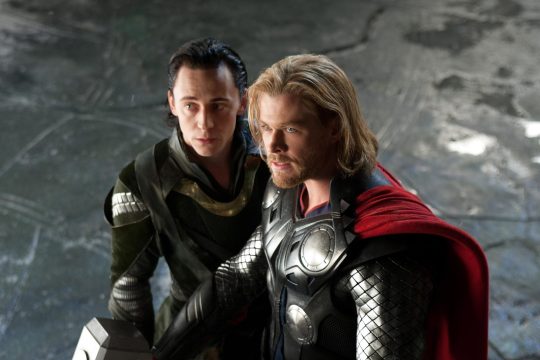
There was a lot riding on that first Thor feature. For one, no one knew if audiences would immediately latch onto a Shakespearean superhero movie partially set on an alien planet populated by the Norse Gods of legend. Second, it was integral to Feige's plans for the shared universe. Loki was supposed to be the main villain in The Avengers, which would not only mirror how Earth's mightiest heroes joined forces in 1963's Avengers #1 but also give Thor a believable reason for teaming up with Iron Man, Captain America (Chris Evans), and the rest of the capes. Feige first clued Hiddleston into those larger plans when the actor was in L.A. before Thor started shooting.
"I was like, 'Excuse me?' Because he was already three, four steps ahead," says Hiddleston. "That took me a few minutes to process, because I didn't quite realize how it just suddenly had a scope. And being cast as Loki, I realized, was a very significant moment for me in my life, and was going to remain. The creative journey was going to be so exciting."
Hiddleston relished the opportunity to go full villain in Avengers, like in the scene where Loki ordered a crowd to kneel before him outside a German opera house: "It's the unspoken truth of humanity, that you crave subjugation," says the Machiavellian god. "The bright lure of freedom diminishes your life's joy in a mad scramble for power, for identity. You were made to be ruled. In the end, you will always kneel."
"I just knew that in the structure of that film, I had to lean into his role as a pure antagonist," Hiddleston recalls. "What I always found curious and complex about the way Loki is written in Avengers, is that his status as an antagonist comes from the same well of not belonging and being marginalized and isolated in the first Thor film. Loki now knows he has no place in Asgard."
Loki did find a place within the audience's hearts, though. Feige was "all in" on Hiddleston as his Loki from the beginning, but even he couldn't predict how much fans would love him. Feige recalls the reaction at the 2013 San Diego Comic-Con: "Did we know that after he was the villain in two movies, he would be bringing thousands of people to their feet in Hall H, in costume, chanting his name? No, that was above and beyond the plan that we were hoping for and dreaming of." It was a dream Feige first got an inkling of a year earlier during the Avengers press tour when a Russian fan slipped past security, snuck into Mark Ruffalo's car, and asked the Hulk actor to give Hiddleston a piece of fan art she created. "That was one of the early signs there was much more happening with this quote-unquote villain."
Despite that popularity, the plan was to kill Loki off in 2013's Thor: The Dark World, but the studio reversed course after test audiences refused to believe he actually died fighting the Dark Elves. Alas, he couldn't out-illusion death forever. After returning in Taika Waititi's colorful and idiosyncratic Thor: Ragnarok, Hiddleston's character perished for real in the opening moments of Infinity War. In typical Loki fashion, before Thanos crushed his windpipe, he delivered a defiant speech that indicated he'd finally made peace with the anger he felt toward his family.
"It felt very, very final, and I thought, 'Okay, that's it. This is Loki's final bow and a conclusive end to the Odinson saga,'" says Hiddleston, who shot that well-earned death scene in 2017.
But, though he didn't know it yet, the actor's MCU story was far from over.
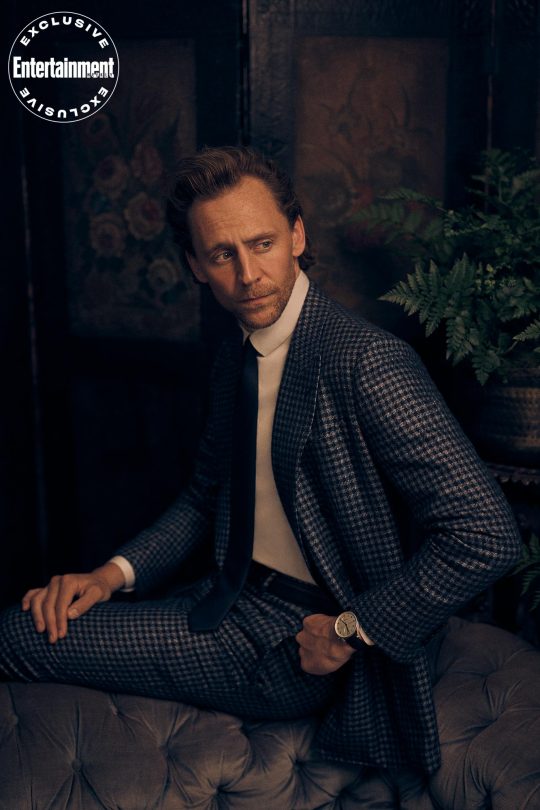
Credit: Charlie Gray for EW
When Hiddleston returned to film two scenes in Avengers: Endgame in 2017, he had no idea where Loki portaled off to after snatching the Tesseract. "Where'd he go? When does he go? How does he get there? These are all questions I remember asking on the day, and then not being given any answers," Hiddleston recalls. To be fair, it's likely the Powers That Be didn't necessarily have answers then. While Feige can't exactly recall when the writers' room for Endgame first devised Loki's escape sequence, he does know that setting up a future show wasn't the primary goal — because a Loki series wasn't on the horizon just yet.
"[That scene] was really more of a wrinkle so that one of the missions that the Avengers went on in Endgame could get screwed up and not go well, which is what required Cap and Tony to go further back in time to the '70s," says Feige. Soon after that, though, former Disney CEO Bob Iger approached Feige about producing content for the studio's forthcoming streaming service. "I think the notion that we had left this hanging loose end with Loki gave us the in for what a Loki series could be. So by the time [Endgame] came out, we did know where it was going."
As for Hiddleston, he didn't find out about the plans for a Loki show until spring 2018, a few weeks before Infinity War hit theaters. "I probably should not have been surprised, but I was," says the actor. "But only because Infinity War had felt so final."
Nevertheless, Hiddleston was excited about returning for his show. He was eager to explore Loki's powers, especially the shapeshifting, and what it meant that this disruptive figure still managed to find a seat beside the gods in mythology. "I love this idea [of] Loki's chaotic energy somehow being something we need. Even though, for all sorts of reasons, you don't know whether you can trust him. You don't know whether he's going to betray you. You don't why he's doing what he's doing," says Hiddleston. "If he's shapeshifting so often, does he even know who he is? And is he even interested in understanding who he is? Underneath all those masks, underneath the charm and the wit, which is kind of a defense anyway, does Loki have an authentic self? Is he introspective enough or brave enough to find out? I think all of those ideas are all in the series — ideas about identity, ideas about self-knowledge, self-acceptance, and the difficulty of it."
“The series will explore Loki's powers in a way they have not yet been explored, which is very, very exciting.”
The thing that truly sold Hiddleston on the show was Marvel's decision to include the Time Variance Authority, a move he describes as "the best idea that anybody had pertaining to the series." Feige and Loki executive producer Stephen Broussard had hoped to find a place for the TVA — an organization that debuted in 1986's Thor #372 and has appeared in She-Hulk and Fantastic Four stories — in the MCU for years, but the right opportunity never presented itself until Loki came along. "Putting Loki into his own procedural series became the eureka moment for the show," says Feige.
The TVA's perspective on time and reality also tied into the themes that Waldron, Loki's head writer, was hoping to explore. "Loki is a character that's always reckoning with his own identity, and the TVA, by virtue of what they do, is uniquely suited to hold up a mirror to Loki and make him really confront who he is and who he was supposed to be," says Waldron. Hiddleston adds: "[That] was very exciting because in the other films, there was always something about Loki that was very controlled. He seemed to know exactly what the cards in his hand were and how he was going to play them…. And Loki versus the TVA is Loki out of control immediately, and in an environment in which he's completely behind the pace, out of his comfort zone, destabilized, and acting out."
To truly dig into who Loki is, the creative team had to learn from the man who knows him best: Hiddleston. "I got him to do a thing called Loki School when we first started," says director Kate Herron. "I asked him to basically talk through his 10 years of the MCU — from costumes to stunts, to emotionally how he felt in each movie. It was fantastic."
Hiddleston got something out of the Loki school, too. Owen Wilson both attended the class and interviewed Hiddleston afterward so that he could better understand Loki, as his character Mobius is supposed to be an expert on him. During their conversation, Wilson pointedly asked Hiddleston what he loved about playing the character.
"And I said, 'I think it's because he has so much range,'" says Hiddleston. "I remember saying this to him: 'On the 88 keys on the piano, he can play the twinkly light keys at the top. He can keep it witty and light, and he's the God of Mischief, but he can also go down to the other side and play the heavy keys. And he can play some really profound chords down there, which are about grief and betrayal and loss and heartbreak and jealousy and pride.'" Hiddleston recalls Wilson being moved by the description: "He said, 'I think I might say that in the show.' And it was such a brilliant insight for me into how open Owen is as an artist and a performer.'"
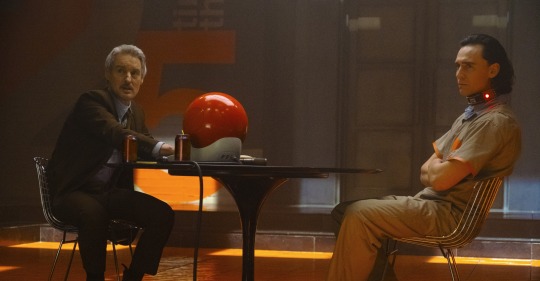
Owen Wilson as Mobius and Tom Hiddleston as Loki in 'Loki.'| Credit: Chuck Zlotnick/Marvel Studios
Everyone involved is particularly excited for audiences to see Hiddleston and Wilson's on-screen chemistry. "Mobius is not unlike Owen Wilson in that he's sort of nonplussed by the MCU," says Feige. "[Loki] is used to getting a reaction out of people, whether it's his brother or his father, or the other Avengers. He likes to be very flamboyant and theatrical. Mobius doesn't give him the reaction he's looking for. That leads to a very unique relationship that Loki's not used to."
As for the rest of the series, we know that Loki will be jumping around time and reality, but the creative team isn't keen on revealing when and where. "Every episode, we tried to take inspiration from different things," says Waldron, citing Blade Runner's noir aesthetic as one example.
"Part of the fun of the multiverse and playing with time is seeing other versions of characters, and other versions of the titular character in particular," says Feige, who also declined to confirm if Loki ties into Doctor Strange in the Multiverse of Madness and/or other upcoming projects.
Making Loki was especially meaningful to Hiddleston because they shot most of it during the pandemic, in late 2020. "It will remain one of the absolute most intense, most rewarding experiences of my life," he says. "It's a series about time, and the value of time, and what time is worth, and I suppose what the experience of being alive is worth. And I don't quite know yet, and maybe I don't have perspective on it, if all the thinking and the reflecting that we did during the lockdown ended up in the series. But in some way, it must have because everything we make is a snapshot of where we were in our lives at that time."
While it remains to be seen what the future holds for Loki beyond this initial season, Hiddleston isn't preparing to put the character to bed yet. "I'm open to everything," he says. "I have said goodbye to the character. I've said hello to the character. I said goodbye to the character [again]. I've learned not to make assumptions, I suppose. I'm just grateful that I'm still here, and there are still new roads to explore."
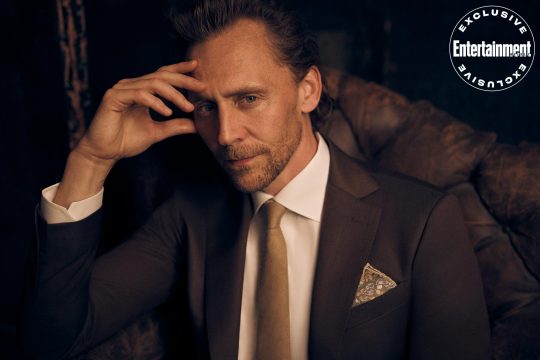
518 notes
·
View notes
Note
hi !! i hope you’re doing well ~ i want to say a few things:
one: i’m no longer a mcyt stan and thus i’ve drifted a lot from writings of the community but somehow i always find myself drawn back to tommy’s clinic !! it was maybe ? the first fic i read about mcyt and i started it when it had like say three chapters 😭 seeing the growth since then makes me incredibly happy as a writer myself it’s just… you’re incredible and despite not enjoying the content anymore i will always enjoy your writing
which brings me.. two! i recently ( this morning ) discovered you have a new fic which i believe you call stars? 😭 and !!!!! oh my gosh. everything about it is mindblowing. the world building is incredible like i cannot begin to explain how much i admire it. i feel like i’m reading original work when i read your stories and it’s amazing how you’re able to create something out of a simple liking towards streamers and youtubers and their characters on a roleplay smp 😞🥺 i looooove love love your mind. seriously.
if you have any worldbuilding ( and ch. building too ) tips would you mind leaving them somewhere? 😅 your worldbuilding just itches something in my little author brain and i want to know your main process sooo badly !!
sending love love love !!! i might drop by again so i’ll drop this emoji so you know it’s me 🧸
awww oh my god this is so sweet!! I'm so happy to hear that even if you're not super into mcyt anymore, you still enjoy my writing :D seriously that's so cool to me that people will read my stuff just because of the stories themselves and not bc of the fandom it's for. like, that's one of the highest compliments i think you can give to a fic writer so thank you <33
also ty for the compliments on my worldbuilding i am SO proud of the worlbuilding i've done for stars. while I definitely do make a very strong effort to keep dynamics and relationships in character and to use the canon characteristics of my characters to influence plot, a lot of my fics are just vehicles for original concepts that i plop my blorbos into like i'm playing dollhouse games lol. I'd love to turn stars into an original novel one day with completely new characters, but we'll have to see how that goes
worldbuilding tips!! on the passerine podcast's channel on youtube I recently did a live interview where I was asked about that, so I'll try to give a condensed version of what I said there. when it comes to worldbuilding for me, I try to imagine it like a tree. there's the main trunk that your story is centered around. these are the world concepts that are going to be directly related to your story so you have to flesh them out to make the base of the trunk as thick as possible. examples of the 'trunk' of my stories would be: the way the system of heroes vs villains in clinic, the setup for the vampire hunting academy in notcturnal animals, and the general government structures of both eldingvegr and zephys iv in stars. these are concepts that are integral to the function of the plot, so they have to be very fleshed out and this is what you're going to want to focus on the most.
a lot of worldbuilding tips i see online say to HEAVILY worldbuild everything about your world so it makes everything feel more alive even if you don't end up using it in the story. personally, I disagree with this, at least for my style of writing. if I told myself I had to know the current economic state of the city in clinic just to 'flesh out the world' more I would never get anything done. instead, when it comes to details like that, I try to think of them as branches on the tree. when certain new elements become relevant to the story, you can add a branch onto the base of the trunk and flesh that detail out albeit in a smaller way. examples of branches would be: the entire function of sigil tattoos on humans vs vampires in nocturnal animals, or the details of different side planets in stars like Floslium, Kinoko, Badlands, etc. these are things that you don't have to start fleshing out until you need them to be talked about in the story. don't bog yourself down with worldbuilding trying to write out every detail of every possible character or organization or government that might sow up before you get anything down on a page. get your trunk determined, then start writing and figure out where you need to branch off from there
I don't know if that makes sense but that's how I think of worldbuilding in my head. as far as chapter building goes I don't have as much in depth advice because I don't really have a solid strategy for how i build chapters. it's kind of just based off what plot points I know I need to hit, and how many I can hit in a single chapter.
anyway ty so much anon!! i'll tag your asks as teddy anon bc of the teddy bear emoji, hope this helped!
8 notes
·
View notes
Text
i feel like... bdg’s vidoes on both polygon & his main channel can be sectioned off into like 3 eras. and depending on which era you watch/watched the most you can have very different ideas on the kind of content he makes/the persona he has. none of them are particularly wrong or bad its just interesting to me :)
1. Job Quest (musical stories that incorporate real parts of brians life [i.e. not having a job]): Watermelon Man, Siblings, My Autobiography, Rejected Old Bay Jingle, Give Up On Your Dreams Of Becoming A Baker. Dances Moving acts as the end of this era as brian moves from baltimore to NY and his content also shifts.
2. Unhinged Professor (?) (referential speech-based theatre, although there is a time between ‘this video got me a job’ and the start of ‘Unraveled’ where he tries to integrate his musical videos into Polygon [see: Week in Revue & Polygolidays] before finding his groove. this era sees the emergence of of ‘Unraveled Brian’ who is for the most part a lot more disconnected from real Brian. videos from this era tend to be focused on breaking a structure or schedule): this video got me a job, every sonic game is blasphemous, buy my bed, new shoes. The Perfect Pokerap acts as the end of this era as it brings Unraveled from dramatic video essays to more of standalone peices.
3. You Could Write An Unraveled About This (unraveled as a series becomes almost self-aware, and less referential and more about the ‘Unraveled Brian’ character. pieces become more high-concept & well-produced, elements of theatre are traded for elements of horror, but he returns to the same sort of traditional storytelling he did in Job Quest, with a few Unhinged Professor mini tutorials for spice): how to make jorts, Waluigi, when can mario retire, it’s time to get good at darts, Pokemon Edibility, building your online brand, have you seen my laptop, teaching jake about the camcorder, we like watching birds, just one day. & the rollerblader’s world is limitless. ongoing as of july 2021*
these obviously arent very concrete theyre just sort of me defining shifts in his video styles over the years which i have noticed and find cool and interesting, and can mostly be tracked by certain time periods rather than strict styles (you can find a Job Quest style video in the Unhinged Professor era, and any number of video styles in his recent content!)
*i originally wrote this post in july
#this has been sitting in my drafts for god knows how long#and his new vid reminded me i wante dto post it#ive been watching brians content for upwards of 3-4 yrs now i could legitimately write an essay on this. I dont want to tho#post#bdg#brian david gilbert#polygon
16 notes
·
View notes
Text
Time Travelling Oni Au
Because y’all seem to like my ramblings, have this. Another concept of mine I’ve sort of been fleshing out is a time travel concept. Quick heads up, like many of my other ideas, this story concept will also be Lloyd centric.
This story focuses on the idea that during the final confrontation with the oni, the ninja and their allies were killed. They lost the final battle, leaving only Lloyd.
However, this really wasn’t supposed to happen. The structural integrity of the realms has been thrown out of balance, and as a result, things are starting to collapse. As a last ditch effort to restore the balance, Lloyd is sent back in time. How exactly this happens I haven’t quite figured out yet, but I’m leaning towards it being the work of a dragon possessing the time element.
Once Lloyd ends up in the past, he’d be pretty distraught and confused. And from here he’d eventually somehow end up going to Mystake, where he’d find out he was sent nearly seven years back in time (In other words, a couple months prior to the events of s1)
From here, Lloyd would become determined to fix the future, and not allow any of the terrible events that happened to them to happen again. He would train his abilities with Mystake, pretty much throwing himself into that work in order to ignore his own grief.
Obviously, this ends up very canon divergent. A couple key points that would end up changed:
The Devourer is never released.
Because the Devourer is never released, her venom isn’t able to awaken the stone army. This prevents s2 and s3 in their entirety from happening.
These two differences would have huge impacts on how the plot goes from here.
F!Lloyd would spend a lot of time doing things behind the scenes, such as sneaking into Chen’s island to burn Clouse’s anacondrai book, and possibly attempting to break his staff. He’d also likely take other smaller actions, perhaps looking for information on the members of the Sons of Garmadon so he can prevent them from ever having a reason to join the gang in the first place.. (Of course this ultimately wouldn’t matter because by preventing the devourer from being released, Harumi’s parents are never killed.)
The first way in which F!Lloyd would end up altering time is through how he manages the Serpentine situation. He would likely allow his past self to release the serpentine, but would then step in (Disguised, obviously) in an attempt to broker a peace treaty between the serpentine and humans.
He would likely accomplish gaining their respect to get them to listen to him by challenging the generals to a slither pit in much the same way that Pythor did in the main timeline, and from there try to work with them to have peace without drastic measures.
However, this would create a lot of tension as unlike in the previous timeline, the serpentine at this point wouldn’t have been defeated so thoroughly, and many are still quite angry at the humans for their injustice towards them. This would likely create an arc in which F!Lloyd tries to balance an already falling apart treaty that could potentially even spark civil war between both different humans and serpentine tribes. Lots of fun. :)
I will likely post more info and art on this in the future, but I didn’t want this infodump to get too long so here’s what I’ve got for now.
55 notes
·
View notes
Text
Loki takes over: Tom Hiddleston on his new TV series and a decade in the MCU
from Entertainment Weekly
Ten years after Hiddleston first chose chaos in Thor, Marvel’s fan favorite God of Mischief is going even bigger with his time-bending Disney+ show.
By Chancellor Agard May 20, 2021
Tom Hiddleston is Loki, and he is burdened with glorious purpose: After playing Thor's puckish brother for over a decade in the Marvel Cinematic Universe, no one understands the mercurial Asgardian God of Mischief as well as the actor. He can teach an entire seminar on Loki if given the opportunity — which he actually did during pre-production on his forthcoming Disney+ show. In conversation, Hiddleston quotes lines from his MCU debut, 2011's Thor, almost verbatim, and will playfully correct you if you mistakenly refer to Asgard's Rainbow Bridge as the Bifrost, which is the portal that connects Loki and Thor's homeworld to the Nine Realms, including Midgard, a.k.a. Earth. "Well, the Bifrost technically is the energy that runs through the bridge," he says with a smile. "But nine points to Gryffindor!" And when he shows up to the photo shoot for this very digital cover, he hops on a call with our photo editor to pitch ways the concept could be even more Loki, like incorporating the flourish the trickster does whenever magically conjuring something. The lasting impression is that playing Loki isn't just a paycheck.
"Rather than ownership, it's a sense of responsibility I feel to give my best every time and do the best I can because I feel so grateful to be a part of what Marvel Studios has created," the 40-year-old Brit tells EW over Zoom a few days after the shoot and a week out from Thor's 10th anniversary. "I just want to make sure I've honored that responsibility with the best that I can give and the most care and thought and energy."
After appearing in three Thor movies and three Avengers, Hiddleston is bringing that passion to his first solo Marvel project, Loki, the House of Ideas' third Disney+ series following the sitcom pastiche WandaVision and the topical The Falcon and the Winter Soldier. Led by head writer Michael Waldron (Doctor Strange in the Multiverse of Madness, Heels), the six-episode drama sees Hiddleston's shapeshifting agent of chaos step out from behind his brother's shadow and into the spotlight for a timey-wimey, sci-fi adventure that aims to get to the bottom of who Loki really is. "I wanted to explore slightly more complex character questions," says Waldron. "It's not just good versus bad. Is anybody all good? Is anybody all bad? What makes a hero, a hero? A villain, a villain?"
Even though Loki — who loves sowing mayhem with his illusion magic and shapeshifting, all with a major chip on his shoulder — has never been one for introspection, the idea of building an entire show around him was a no-brainer for Marvel. When asked why Loki was one of the studio's first Disney+ shows, Marvel president Kevin Feige replies matter-of-factly, "More Hiddleston, more Loki." First introduced as Thor's (Chris Hemsworth) envious brother in Kenneth Branagh's Thor, Loki went full Big Bad in 2012's The Avengers. That film cemented the impish rogue as one of the shared universe's fan favorites, thanks to Hiddleston's ability to make him deliciously villainous yet charismatic and, most importantly, empathetic. The character's popularity is one of the reasons he's managed to avoid death many times.
"He's been around for thousands of years. He had all sorts of adventures," says Feige. "Wanting to fill in the blanks and see much more of Loki's story [was] the initial desire [for the series]."
The Loki we meet on the show is not the one who fought the Avengers in 2012 and evolved into an antihero in Thor: The Dark World and Thor: Ragnarok before meeting his demise at the hands of the mad titan Thanos (Josh Brolin) in 2018's Avengers: Infinity War. Instead, we'll be following a Loki from a branched timeline (a variant, if you will) after he stole the Tesseract following his thwarted New York invasion and escaped S.H.I.E.L.D. custody during the time heist featured in Avengers: Endgame. In other words, this Loki hasn't gone through any sort of redemption arc. He's still the charming yet petulant god who firmly believes he's destined to rule and has never gotten his due.
Premiering June 9, Loki begins with the Time Variance Authority — a bureaucratic organization tasked with safeguarding the proper flow of time — arresting the Loki Variant seen in Endgame because they want his help fixing all of the timeline problems he caused while on the run with the Tesseract. So there will be time travel, and a lot more of it than in Endgame. As Loki makes his way through his own procedural, he'll match wits with new characters including Owen Wilson's Agent Mobius, a brilliant TVA analyst, and Gugu Mbatha-Raw's Judge Renslayer. The question in early episodes is whether Loki will help them or take over.
"One of the things Kevin Feige led on was, 'I think we should find a way of exploring the parts of Loki that are independent of his relationship with Thor,' or see him in a duality or in relationship with others, which I thought was very exciting," says Hiddleston, who also serves as an executive producer on the show. "So the Odinson saga, that trilogy of films, still has its integrity, and we don't have to reopen it and retell it."
Yet, in order to understand where Loki is going, it's important to see where he came from.
Hiddleston can't believe how long he and Loki have been connected. "I've been playing this character for 11 years," he says. "Which is the first time I have said that sentence, I realize, and it [blows] my mind. I don't know what percentage that is exactly of my 40 years of being alive, but it's substantial."
His time as Loki actually goes a bit further back, to 2009 — a year after Robert Downey Jr. big banged the MCU into existence with Iron Man — when he auditioned for Thor. It's no secret that Hiddleston initially went in for the role of the titular God of Thunder, but Feige and director Kenneth Branagh thought his natural charm and flexibility as an actor made him better suited for the movie's damaged antagonist. "Tom gave you an impression that he could be ready for anything, performance-wise," says Branagh, who had previously worked with him on a West End revival of Checkov's Ivanov and the BBC series Wallander. "Tom has a wild imagination, so does Loki. He's got a mischievous sense of humor and he was ready to play. It felt like he had a star personality, but he was a team player."
Hiddleston fully immersed himself in the character. Outside of studying Loki's history in the Marvel Comics, he also researched how Loki and the Trickster God archetype appeared across mythology and different cultures. "He understood that he was already in something special [and] it was a special character in a special part of that early moment in the life of the Marvel universe where [he] also needed to step up in other ways," says Branagh, who was impressed by the emotional depth Hiddleston brought to the part, especially when it came to how isolated Loki felt in the Asgardian royal family.
There was a lot riding on that first Thor feature. For one, no one knew if audiences would immediately latch onto a Shakespearean superhero movie partially set on an alien planet populated by the Norse Gods of legend. Second, it was integral to Feige's plans for the shared universe. Loki was supposed to be the main villain in The Avengers, which would not only mirror how Earth's mightiest heroes joined forces in 1963's Avengers #1 but also give Thor a believable reason for teaming up with Iron Man, Captain America (Chris Evans), and the rest of the capes. Feige first clued Hiddleston into those larger plans when the actor was in L.A. before Thor started shooting.
"I was like, 'Excuse me?' Because he was already three, four steps ahead," says Hiddleston. "That took me a few minutes to process, because I didn't quite realize how it just suddenly had a scope. And being cast as Loki, I realized, was a very significant moment for me in my life, and was going to remain. The creative journey was going to be so exciting."
Hiddleston relished the opportunity to go full villain in Avengers, like in the scene where Loki ordered a crowd to kneel before him outside a German opera house: "It's the unspoken truth of humanity, that you crave subjugation," says the Machiavellian god. "The bright lure of freedom diminishes your life's joy in a mad scramble for power, for identity. You were made to be ruled. In the end, you will always kneel."
"I just knew that in the structure of that film, I had to lean into his role as a pure antagonist," Hiddleston recalls. "What I always found curious and complex about the way Loki is written in Avengers, is that his status as an antagonist comes from the same well of not belonging and being marginalized and isolated in the first Thor film. Loki now knows he has no place in Asgard."
Loki did find a place within the audience's hearts, though. Feige was "all in" on Hiddleston as his Loki from the beginning, but even he couldn't predict how much fans would love him. Feige recalls the reaction at the 2013 San Diego Comic-Con: "Did we know that after he was the villain in two movies, he would be bringing thousands of people to their feet in Hall H, in costume, chanting his name? No, that was above and beyond the plan that we were hoping for and dreaming of." It was a dream Feige first got an inkling of a year earlier during the Avengers press tour when a Russian fan slipped past security, snuck into Mark Ruffalo's car, and asked the Hulk actor to give Hiddleston a piece of fan art she created. "That was one of the early signs there was much more happening with this quote-unquote villain."
Despite that popularity, the plan was to kill Loki off in 2013's Thor: The Dark World, but the studio reversed course after test audiences refused to believe he actually died fighting the Dark Elves. Alas, he couldn't out-illusion death forever. After returning in Taika Waititi's colorful and idiosyncratic Thor: Ragnarok, Hiddleston's character perished for real in the opening moments of Infinity War. In typical Loki fashion, before Thanos crushed his windpipe, he delivered a defiant speech that indicated he'd finally made peace with the anger he felt toward his family.
"It felt very, very final, and I thought, 'Okay, that's it. This is Loki's final bow and a conclusive end to the Odinson saga,'" says Hiddleston, who shot that well-earned death scene in 2017.
But, though he didn't know it yet, the actor's MCU story was far from over.
When Hiddleston returned to film two scenes in Avengers: Endgame in 2017, he had no idea where Loki portaled off to after snatching the Tesseract. "Where'd he go? When does he go? How does he get there? These are all questions I remember asking on the day, and then not being given any answers," Hiddleston recalls. To be fair, it's likely the Powers That Be didn't necessarily have answers then. While Feige can't exactly recall when the writers' room for Endgame first devised Loki's escape sequence, he does know that setting up a future show wasn't the primary goal — because a Loki series wasn't on the horizon just yet.
"[That scene] was really more of a wrinkle so that one of the missions that the Avengers went on in Endgame could get screwed up and not go well, which is what required Cap and Tony to go further back in time to the '70s," says Feige. Soon after that, though, former Disney CEO Bob Iger approached Feige about producing content for the studio's forthcoming streaming service. "I think the notion that we had left this hanging loose end with Loki gave us the in for what a Loki series could be. So by the time [Endgame] came out, we did know where it was going."
As for Hiddleston, he didn't find out about the plans for a Loki show until spring 2018, a few weeks before Infinity War hit theaters. "I probably should not have been surprised, but I was," says the actor. "But only because Infinity War had felt so final."
Nevertheless, Hiddleston was excited about returning for his show. He was eager to explore Loki's powers, especially the shapeshifting, and what it meant that this disruptive figure still managed to find a seat beside the gods in mythology. "I love this idea [of] Loki's chaotic energy somehow being something we need. Even though, for all sorts of reasons, you don't know whether you can trust him. You don't know whether he's going to betray you. You don't why he's doing what he's doing," says Hiddleston. "If he's shapeshifting so often, does he even know who he is? And is he even interested in understanding who he is? Underneath all those masks, underneath the charm and the wit, which is kind of a defense anyway, does Loki have an authentic self? Is he introspective enough or brave enough to find out? I think all of those ideas are all in the series — ideas about identity, ideas about self-knowledge, self-acceptance, and the difficulty of it."
“The series will explore Loki's powers in a way they have not yet been explored, which is very, very exciting.”
The thing that truly sold Hiddleston on the show was Marvel's decision to include the Time Variance Authority, a move he describes as "the best idea that anybody had pertaining to the series." Feige and Loki executive producer Stephen Broussard had hoped to find a place for the TVA — an organization that debuted in 1986's Thor #372 and has appeared in She-Hulk and Fantastic Four stories — in the MCU for years, but the right opportunity never presented itself until Loki came along. "Putting Loki into his own procedural series became the eureka moment for the show," says Feige.
The TVA's perspective on time and reality also tied into the themes that Waldron, Loki's head writer, was hoping to explore. "Loki is a character that's always reckoning with his own identity, and the TVA, by virtue of what they do, is uniquely suited to hold up a mirror to Loki and make him really confront who he is and who he was supposed to be," says Waldron. Hiddleston adds: "[That] was very exciting because in the other films, there was always something about Loki that was very controlled. He seemed to know exactly what the cards in his hand were and how he was going to play them…. And Loki versus the TVA is Loki out of control immediately, and in an environment in which he's completely behind the pace, out of his comfort zone, destabilized, and acting out."
To truly dig into who Loki is, the creative team had to learn from the man who knows him best: Hiddleston. "I got him to do a thing called Loki School when we first started," says director Kate Herron. "I asked him to basically talk through his 10 years of the MCU — from costumes to stunts, to emotionally how he felt in each movie. It was fantastic."
Hiddleston got something out of the Loki school, too. Owen Wilson both attended the class and interviewed Hiddleston afterward so that he could better understand Loki, as his character Mobius is supposed to be an expert on him. During their conversation, Wilson pointedly asked Hiddleston what he loved about playing the character.
"And I said, 'I think it's because he has so much range,'" says Hiddleston. "I remember saying this to him: 'On the 88 keys on the piano, he can play the twinkly light keys at the top. He can keep it witty and light, and he's the God of Mischief, but he can also go down to the other side and play the heavy keys. And he can play some really profound chords down there, which are about grief and betrayal and loss and heartbreak and jealousy and pride.'" Hiddleston recalls Wilson being moved by the description: "He said, 'I think I might say that in the show.' And it was such a brilliant insight for me into how open Owen is as an artist and a performer.'"
Everyone involved is particularly excited for audiences to see Hiddleston and Wilson's on-screen chemistry. "Mobius is not unlike Owen Wilson in that he's sort of nonplussed by the MCU," says Feige. "[Loki] is used to getting a reaction out of people, whether it's his brother or his father, or the other Avengers. He likes to be very flamboyant and theatrical. Mobius doesn't give him the reaction he's looking for. That leads to a very unique relationship that Loki's not used to."
As for the rest of the series, we know that Loki will be jumping around time and reality, but the creative team isn't keen on revealing when and where. "Every episode, we tried to take inspiration from different things," says Waldron, citing Blade Runner's noir aesthetic as one example.
"Part of the fun of the multiverse and playing with time is seeing other versions of characters, and other versions of the titular character in particular," says Feige, who also declined to confirm if Loki ties into Doctor Strange in the Multiverse of Madness and/or other upcoming projects.
Making Loki was especially meaningful to Hiddleston because they shot most of it during the pandemic, in late 2020. "It will remain one of the absolute most intense, most rewarding experiences of my life," he says. "It's a series about time, and the value of time, and what time is worth, and I suppose what the experience of being alive is worth. And I don't quite know yet, and maybe I don't have perspective on it, if all the thinking and the reflecting that we did during the lockdown ended up in the series. But in some way, it must have because everything we make is a snapshot of where we were in our lives at that time."
While it remains to be seen what the future holds for Loki beyond this initial season, Hiddleston isn't preparing to put the character to bed yet. "I'm open to everything," he says. "I have said goodbye to the character. I've said hello to the character. I said goodbye to the character [again]. I've learned not to make assumptions, I suppose. I'm just grateful that I'm still here, and there are still new roads to explore."
Additional reporting by Jessica Derschowitz
26 notes
·
View notes
Note
Hello! I've browsed this blog a bit and came across the idea that torturers often develop mental illness because of their repeated exposure to the violence/trauma of seeing another person in pain, which I'd never considered before. A) Do you believe torturers can therefore be a type of victim as well, depending on the circumstances, and therefore deserving of compassion/therapy? B) Can you point me to more information about this/what kinds of mental illnesses develop in torturers? (1/2)
C) Do you think it's possible for a mass murderer/torturer character to have a realistic, satisfying redemption arc? Do you know any media that's pulled it off believably? Thank you so much for taking the time to read/answer this if you do! And for this excellent resource!
-
The most accessible sources that cover this are O’Mara’s Why Torture Doesn’t Work (good grounding, start with him), Rejali’s Torture and Democracy and the appendices to Fanon’s The Wretched of the Earth where he describes treating two torturers.
The most current research is about 600 pages of print on demand untranslated French. If you’re fluent in French (I am not and lock down etc has got in the way of me getting this translated) Sironi Comment devient-on tortionnaire?
Broadly speaking the symptoms appear to be the same as those survivors and witnesses develop.
And I will go into this in more depth later but keep in mind there is not anywhere near enough research on torturers for us to be entirely sure about most of this. I’m working with the best information we have right now.
The other two questions are subjective and sort of complicated. By definition a lot of this is going to be my opinion because well that’s what you’re asking for.
I think we need to be really careful about describing torturers as ‘victims’.
Yes they’re put in this situation by social structures beyond their control. It is not their fault that they weren’t given training or support in their job. It’s also not their fault that we have this global message that violence is effective or that so many workplaces are unnecessarily pressured/stressful. Most of the time they are drawn in to abusing others because of the social groups and structures within the organisation they join.
Oversight (with a drive to eradicate torture), funding, training and clear consistent messages about the right way to handle difficult situations would probably prevent most cases of torture.
This does not change the fact that on an individual level each of them chose to hurt other people.
Some of them will have made that choice understanding there was a threat to their own safety if they did not. Some of them will have made that choice just because it was what everyone else was doing. Some of them genuinely believe what they did was the ‘right’ decision at the time.
They still made that choice. And given that we have records of people in similar positions refusing, even when it put them at risk of attack or death, I don’t have a lot of sympathy with the choice torturers made.
The fact I’m a pacifist factors into this. Consider my biases.
Torturers typically show a very low understanding of the impact their actions have had on other people.
They might regret their actions but this is typically framed in a very self-centred way. They usually don’t express more then cursory regard for the victims. They regret it because they’re suffering now, because they have nightmares, because they can’t keep a job. And oh it’s all so unfair.
I don’t know why this is the case. But it’s a feature Sironi described in interviews about her work. And I’ve seen it over and over again in interviews with torturers.
Yes torturers suffer. The symptoms they develop are terrible and have a lasting impact on their lives. They typically can’t hold down jobs and struggle to re-integrate into society in any meaningful fashion.
And yes I believe they should be treated. I believe that anyone with a disease or condition which requires treatment should have access to care and treatment. Whoever they are. Whatever they did.
I believe that as fellow human beings torturers are entitled to a degree of compassion. When I say that torture and mistreatment are wrong I mean it. My position doesn’t change just because the theoretical victim is a former torturer.
I do not think that treatment and compassion should be dependant on a person being suitably victimised. For me the only thing it depends on is their need and their humanity. In the literal physical sense of them being a human.
But we tend to think of ‘victim’ as a simple category that doesn’t overlap with mass murderers.
And I don’t believe the position of torturers is that simple.
Especially when so few of them are charged. Torture trials are rare. Convictions are rare. And sentences are short.
And their victims deserve justice too.
I feel conflicted about calling torturers ‘victims’ because of this complex reality. And because in fiction we have a tendency to focus on the torturers prioritising their voices over the survivors. I feel like presenting torturers as simple victims of society could risk adding to that.
For me the focus has always got to be the survivors.
And I think all of this feeds into how we handle redemption arcs.
I don’t think that writing redemption arcs for villains, even torturers or mass murderers is ‘wrong’. In fact I think that it can be a really good idea. Showing how toxic the environments these people are in is a good thing. Puncturing the way it’s romanticised is a good thing. And showing a way out of it, even if it’s imagined, is not a bad thing.
But if we’re going to do that in our stories then I think we need to think about what redemption means and in whose eyes the character is redeemed.
There’s also a small problem: we don’t really know what recovery for torturers looks like.
There isn’t enough research on them. Partly because of lack of interest but partly because the low conviction rates means sample sizes are small. We’re talking about a limited number of individuals who are jailed and we can’t really ‘prove’ that individuals who weren’t convicted were torturers. We don’t really know what the long term outcomes are, what treatments might be effective or- Much of anything.
Studies on torturers are typically based on very small numbers of individuals. (For a long time Fanon’s work was the only example of a mental health professional talking about torturers specifically. He saw two of them.) They are not statistically sound. And a lot of resources were simply journalists or mental health professionals compiling notes on the handful of individuals they talked to.
Everything I say about torturers is based on things like interviews, a handful of studies that have flaws and anecdotal evidence. Unfortunately as of right now it’s the best we’ve got.
Personally I don’t think there’s enough research on torture generally. Or enough attempts to collate relevant research from other fields. But that’s a rant for another day.
Let’s get back to that central question: what does redemption mean?
I think that it’s pretty easy to write a character changing for the better. You can build up the character’s level of insight into what they’re doing/did over the course of the story. You can show them choosing to stop. You can show them shifting to oppose their former allies.
But bundled up in the idea of a redemption arc is this: is it enough? And who is it enough for?
I don’t think survivors should be obliged to forgive former torturers. I also don’t think they’re likely to interact positively.
I’ve talked about this now and again when asked about the difference between legally defined torture and abuse. Because of the organised and widespread nature of legally defined torture there are usually communities of survivors. And communities that are collectively moving through a recovery process because even those people who weren’t directly attacked are likely to be witnesses, carers and relatives or friends of survivors.
These things echo down generations.
Cyprus gained independence from the British in 1960, my father is too young to have any real memory of the violence during the colonial period. But he referenced it in arguments with my English mother during my childhood. There are people throughout China today who won’t buy anything Japanese because of Japanese war crimes there during World War 2. There are people who won’t eat fish from the Black Sea, because the bodies of their ancestors were thrown into that sea during a genocide over a hundred years ago.
I know that as a both a Greek Cypriot and an English person there are people all over the world who will not want anything to do with me based on what my people have done to theirs. And the fact I wasn’t alive at the time does not really factor into it.
What I’m trying to illustrate here is that this is much bigger, broader and more complex then individual acts of forgiveness.
Survivors are a highly varied group of individuals. And each torturer can have thousands or tens of thousands of victims. Expecting each impacted individual, and any witnesses and all their family members and friends, to forgive these people is… let’s say ‘unlikely’.
So does redemption require forgiveness from the wounded party? Is there any possible action that can atone for the sheer scale of these atrocities?
If we play a simple number game causing this level of harm can be achieved in months or years, but saving the equivalent number of lives takes decades of skilled, dedicated work. If we look at concepts like wergild or jail as ‘paying your debt to society’ then how do we measure something like torture where the numbers are so big?
I haven’t seen a piece of fiction seriously tackle these questions. But then again I also haven’t actively looked for that fiction.
I feel like a lot of fictional redemption arcs judge a character to be sufficiently redeemed based on audience sympathy and the main cast forgiving the character. They don’t typically go on to broaden the scope of the narrative and question whether any one else impacted by the former villain’s actions also sees the character as redeemed.
One of my stories has a former torturer as a major character and I think they are a sympathetic character in many ways. I think that my readers would empathise with them through a lot of the story (which takes place decades after they stopped torturing).
They’re a mentor figure to some of the younger cast members. They’ve acted as a protector to them and taught the younger generation a lot about the minority culture they themselves are from. And they do genuinely care about these people that they helped to raise, consistently sacrificing to protect these ‘kids’. (The ‘kids’ are 30s-20s at the time of the story.)
But they’re also incredibly self centred. They don’t really interact with or have a lot of sympathy for the people they hurt. And while this particular family loves and forgives them society at large views them as a monster. Albeit one that is now leashed.
Is this a redemption story? Is this character redeemed? I genuinely don’t know. In fact that’s part of my interest in writing the story: trying to work out if there is a point, as this character grows, develops and helps others, when I believe they’ve done ‘enough’.
I think that redemption means different things for different people. A satisfying redemption story is different for different people. And if we can disagree so strongly about it with much simpler, smaller scale crimes then where does that leave us with torture?
There isn’t a simple answer or a one-size-fits-all writing solution. There can’t be.
My approach is to try and use the story to see if I can find an answer. Even if it’s only a limited one. For me the story itself is a forum for exploring human complexity and difficult ethical questions.
I don’t think we have a good solution for how to deal with these people in reality yet. But I do hold out hope that a good solution is possible. Fiction is an arena where we can safely explore possible solutions.
I guess in the end I’m not sure if there’s any story or arc that will work for everyone. I don’t think there are any hard rules for writing anything and I don’t think there’s ever a way to please everyone.
Redemption and forgiveness are complicated topics. I think we do a much better job when we engage with that complexity then when we assume a character just has to do a, b and c in order to achieve it.
When you consider someone to be truly redeemed is an ethical question that I can’t answer for you. I don’t think I should. The chances are you’ll know when you think your character has done enough.
Just be open to the fact that it won’t be enough for everyone. Consider reflecting that with the characters, because that can make for truly powerful moments.
In Midnight’s Children Shiva never forgives Saleem, even though Saleem isn’t responsible for Shiva ‘losing’ his life and family because they were both infants at the time. And damn there are a lot of flaws in the movie adaptation but that scene between them in the jail, when Saleem throws that in Shiva’s face hits hard. It shows us so much about both characters.
And I think that’s a better way to approach it then trying to figure out if a character is redeemed yet: figuring out how they’ve progressed, how others respond to that progression and why.
I hope that helps :)
Available on Wordpress.
Disclaimer
#delilahmidnight#writing advice#tw torture#writing torturers#torturers#behaviour of torturers#effect of torture on torturers#effects of torture on society#effects of torture on organisations#responses to torture#societal response to torture#responses to torturers#sironi#redemption arcs#redemption#writing recovery#colonialism#colonial history#legal definition of torture#forgiveness#ethics#ethical debate
185 notes
·
View notes